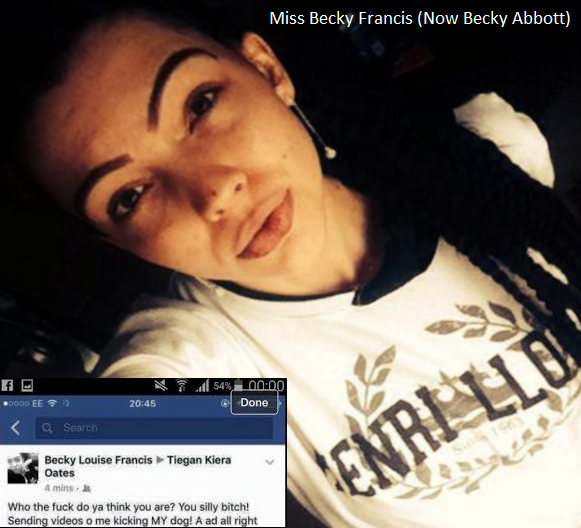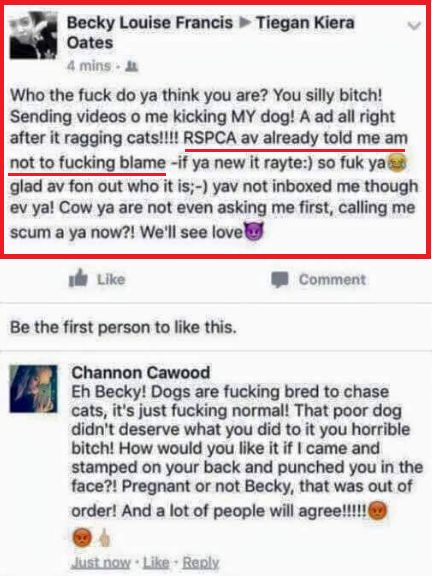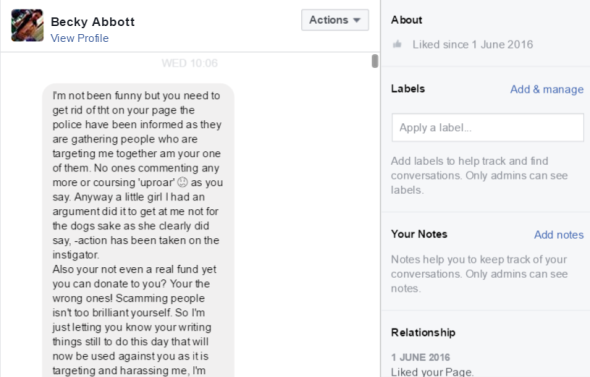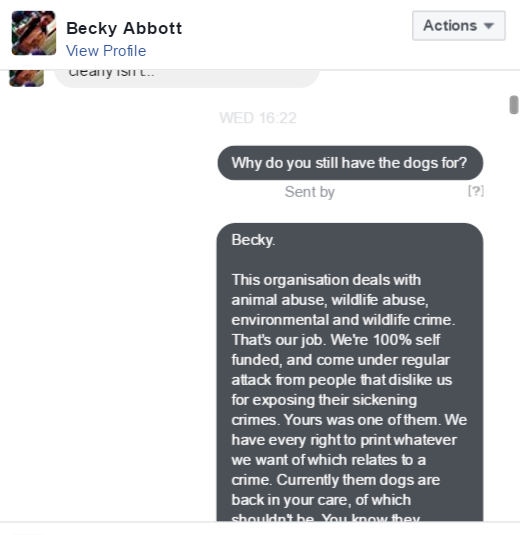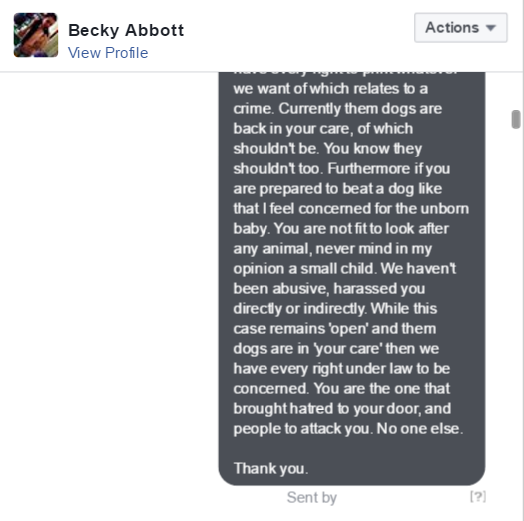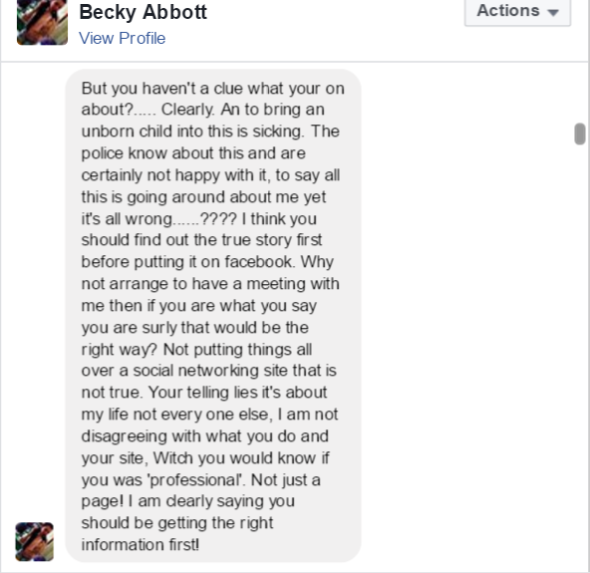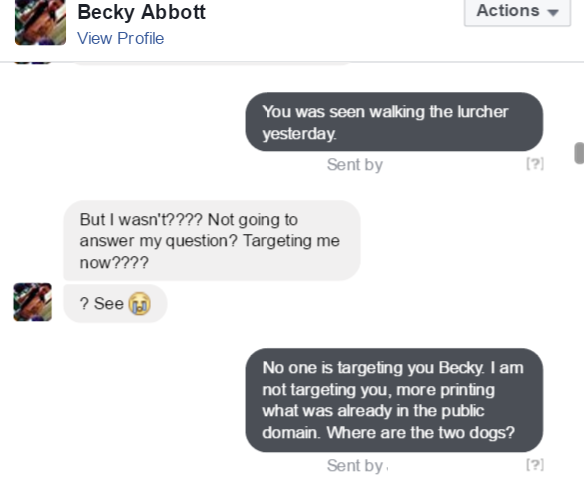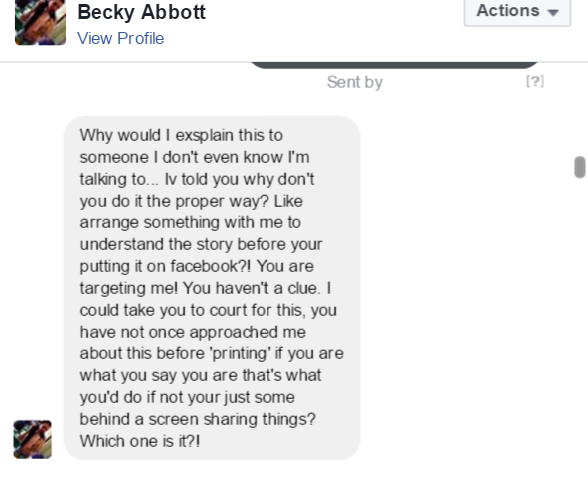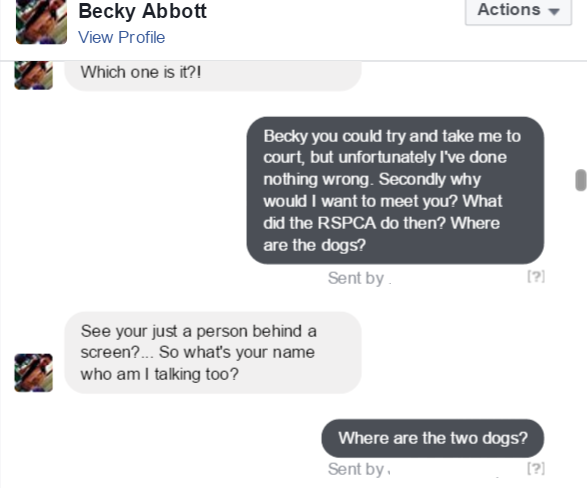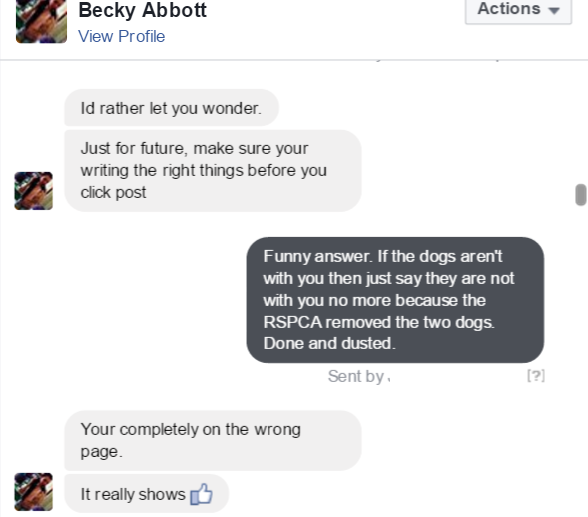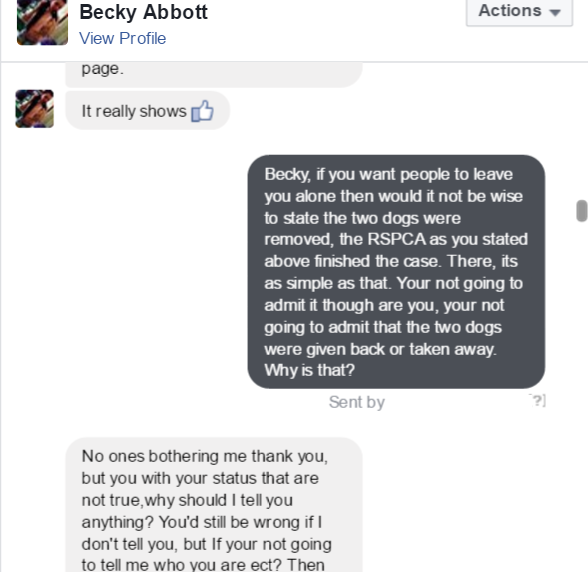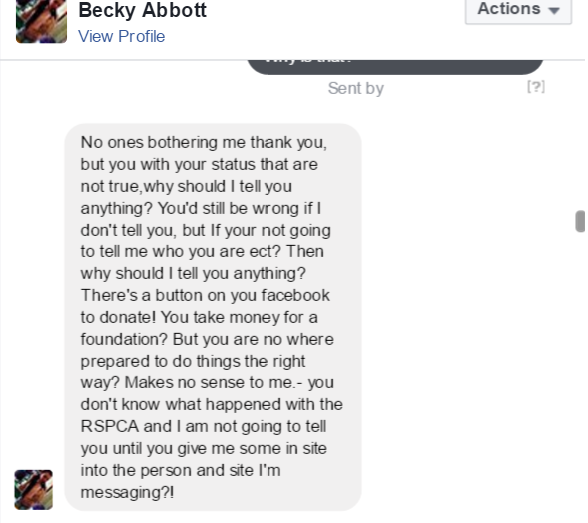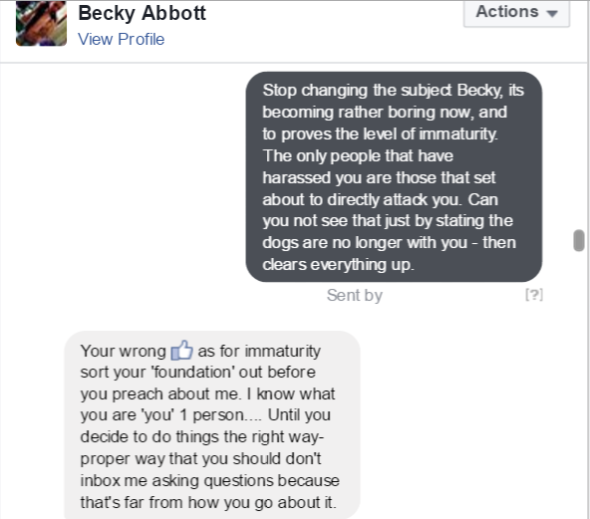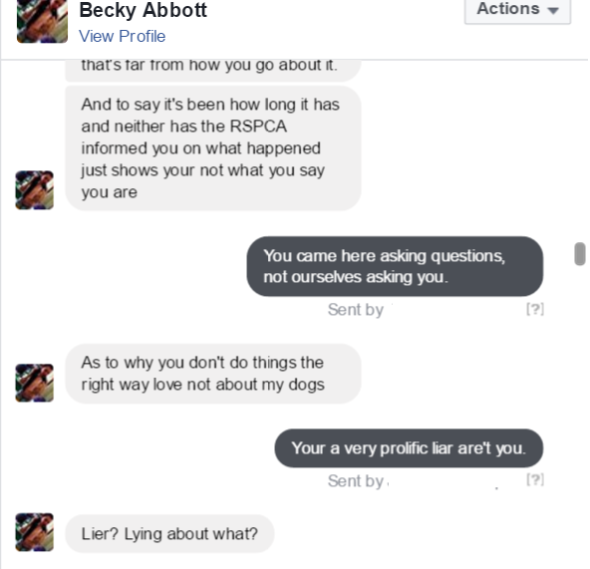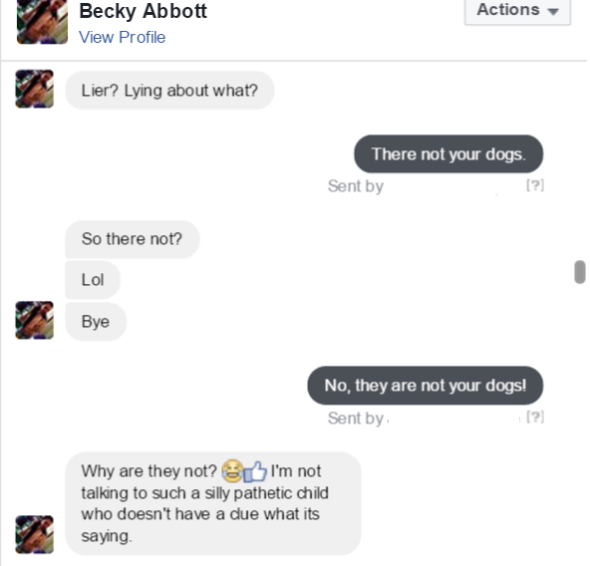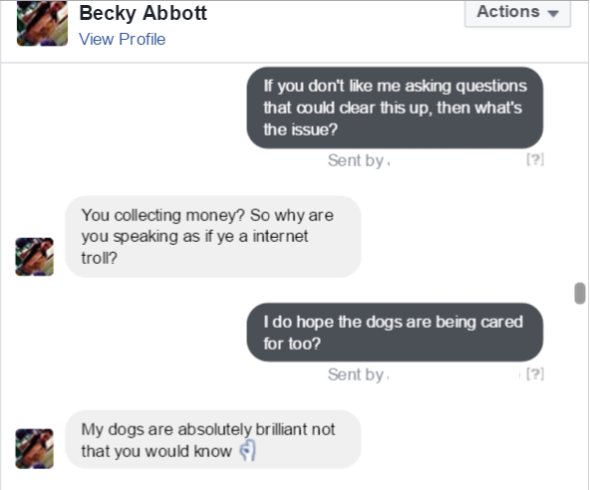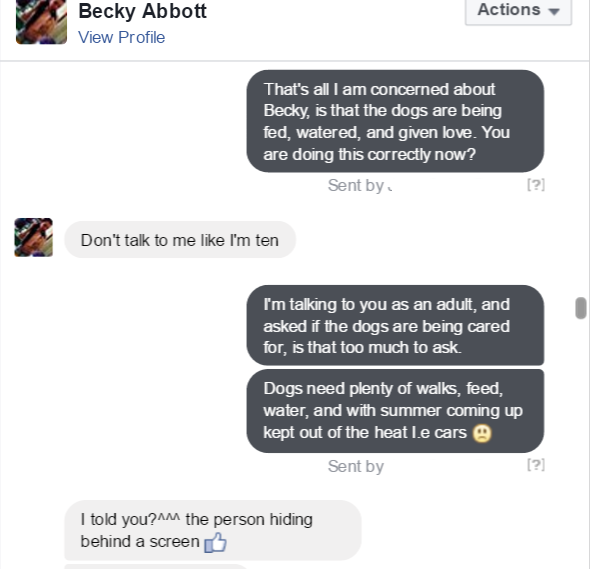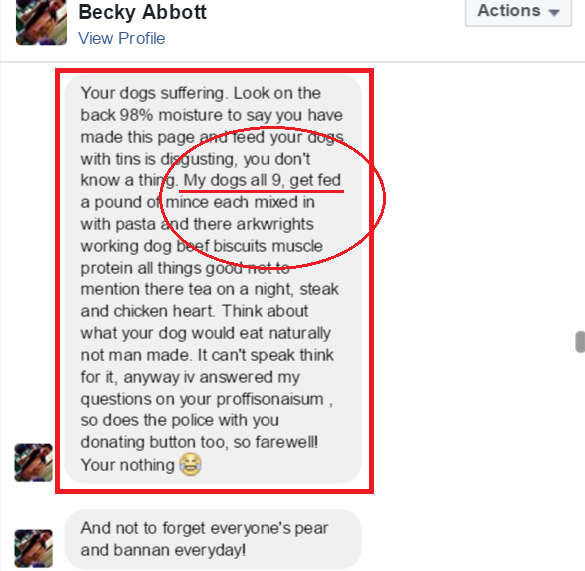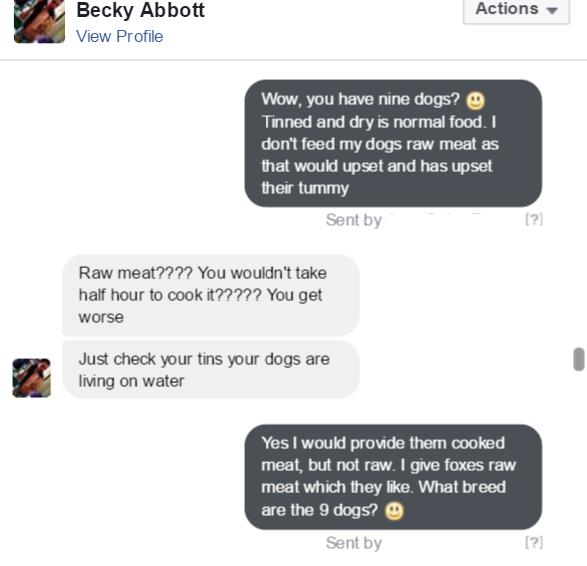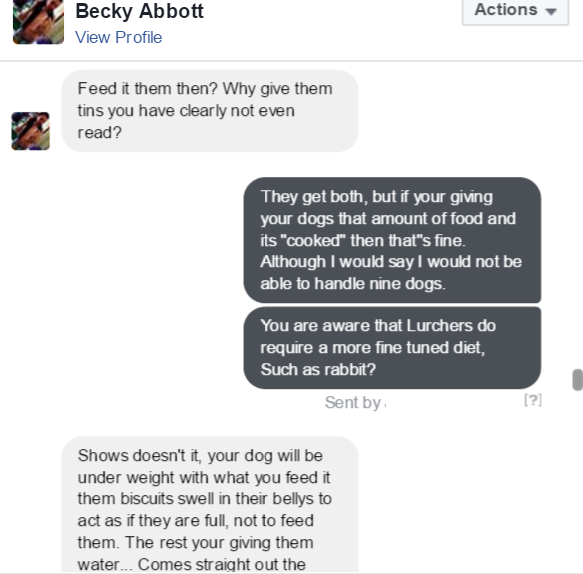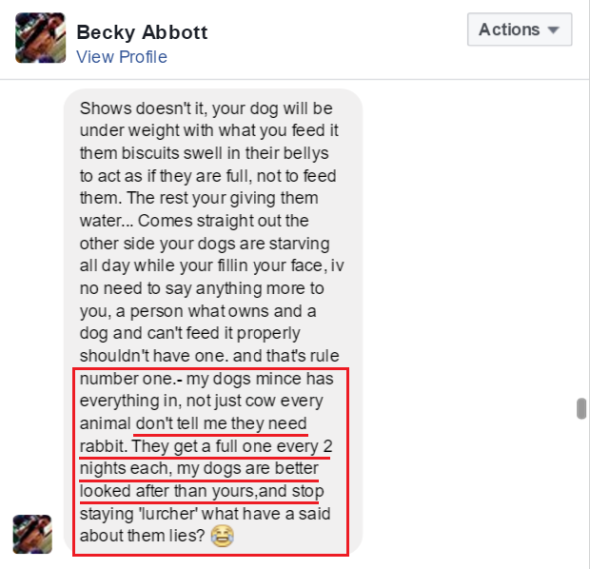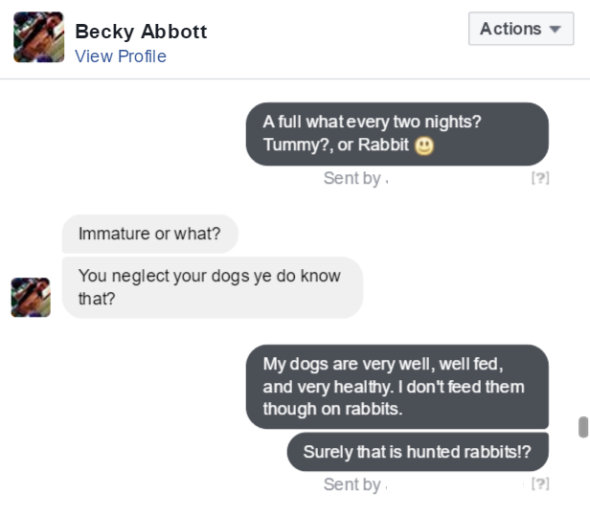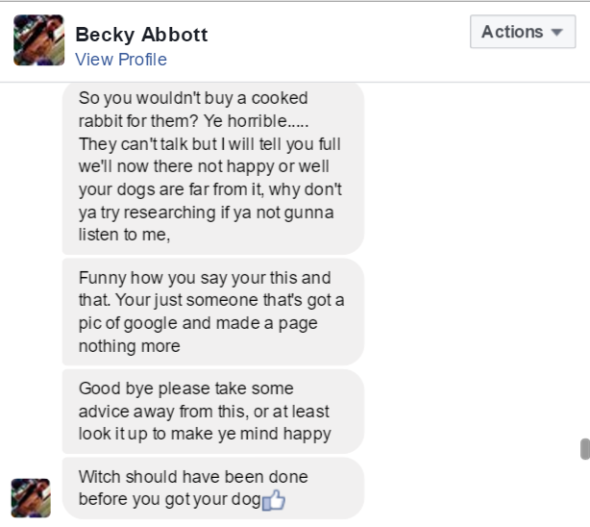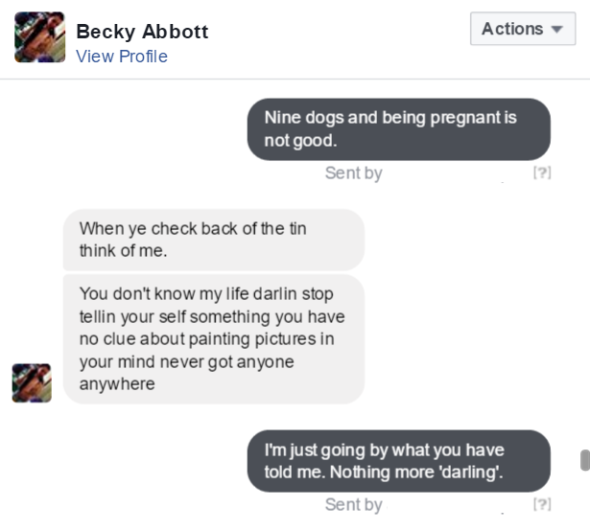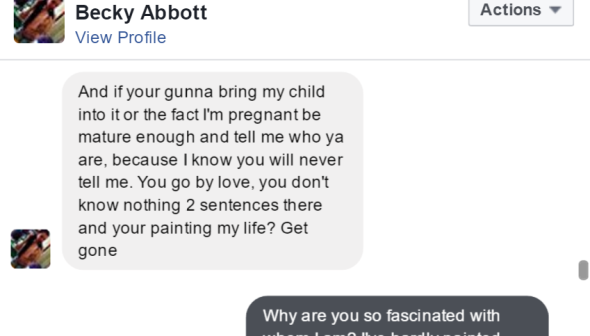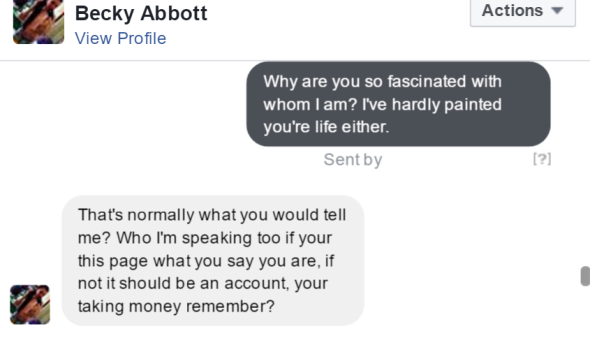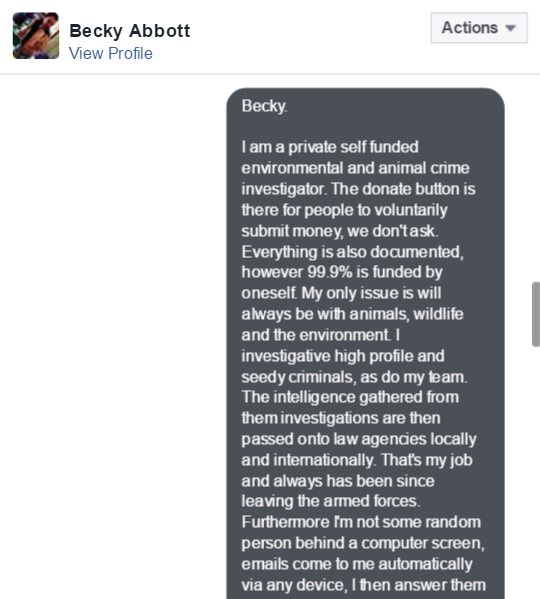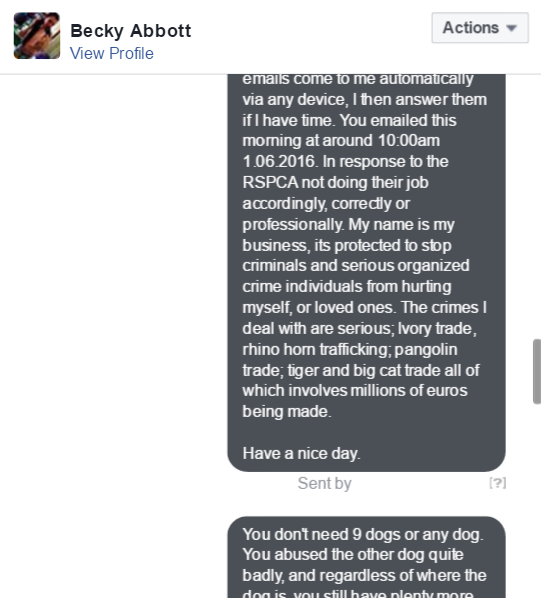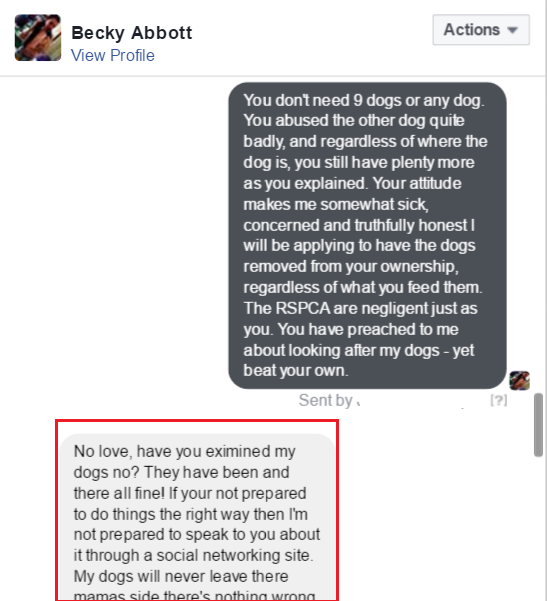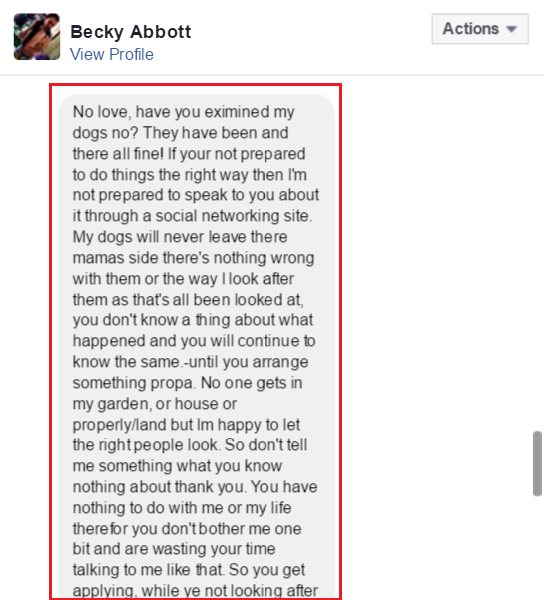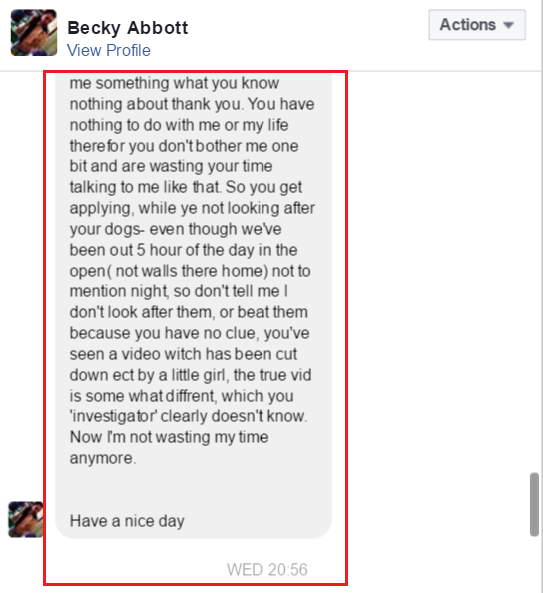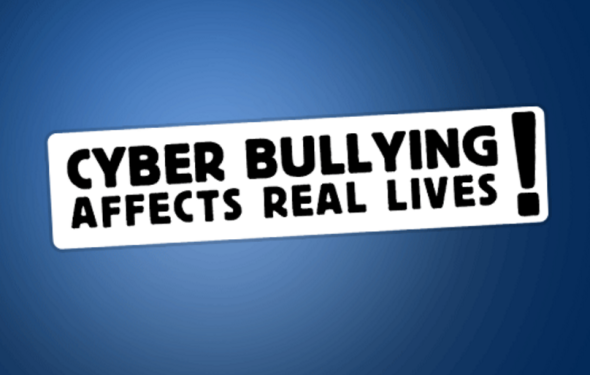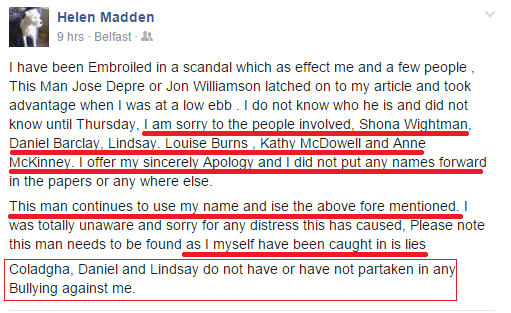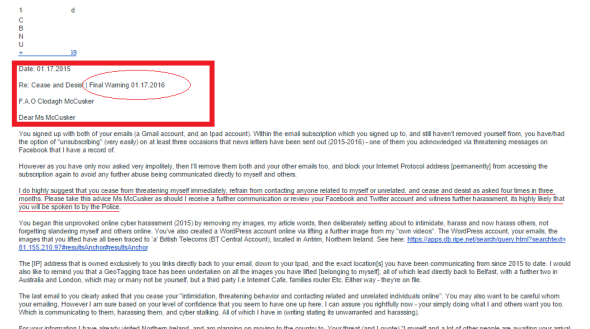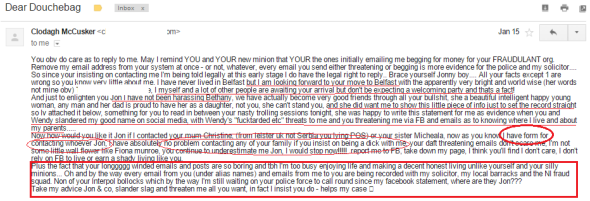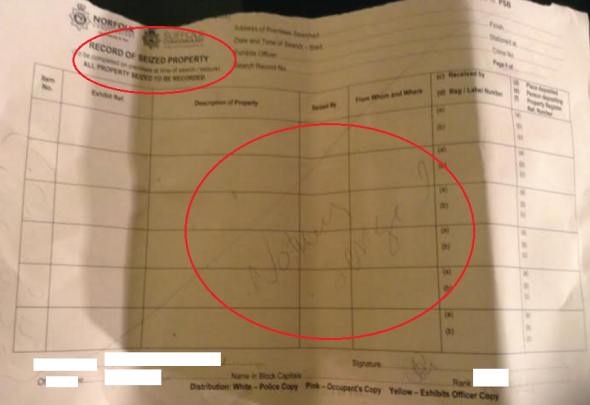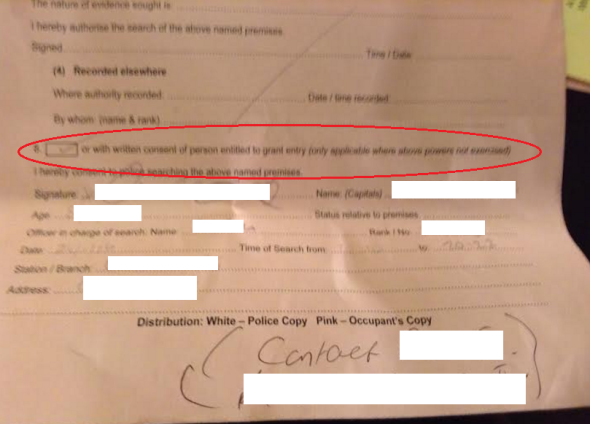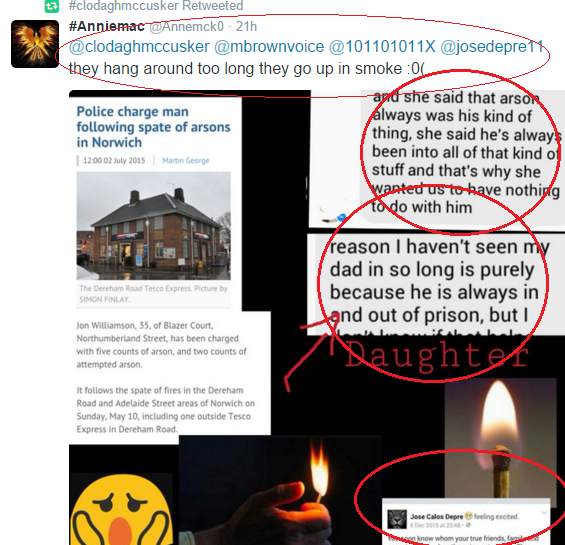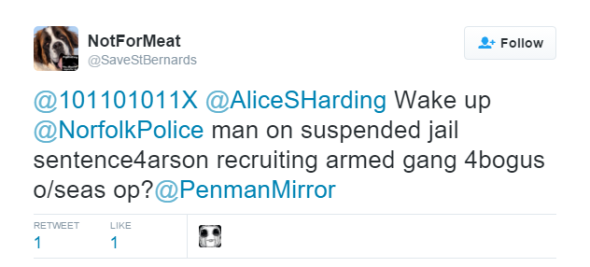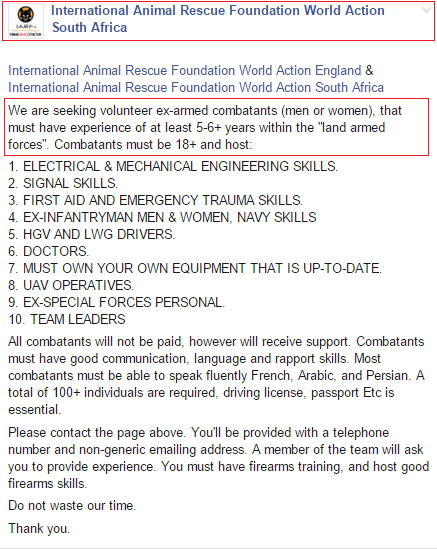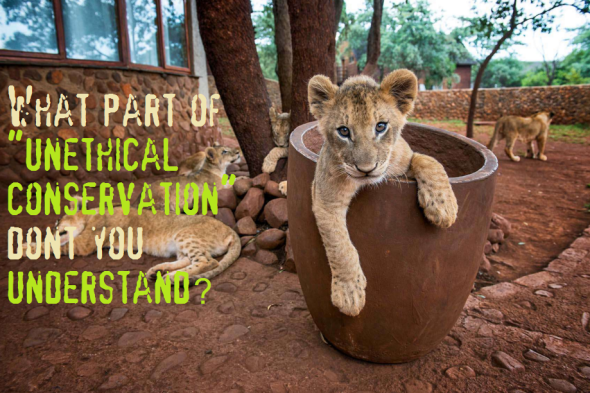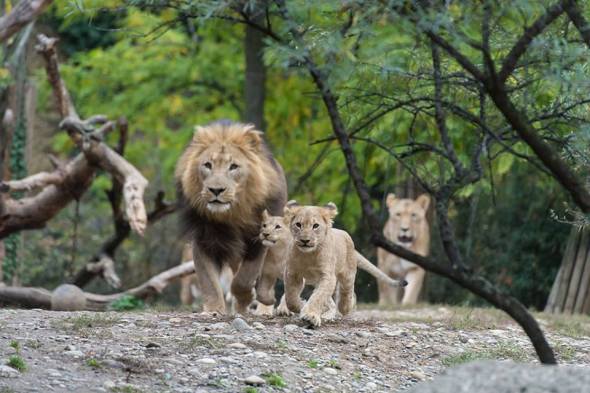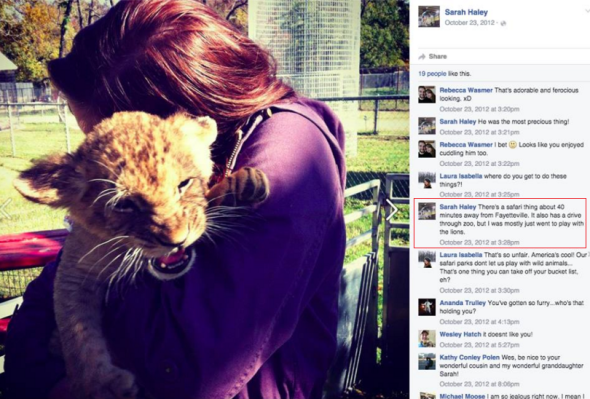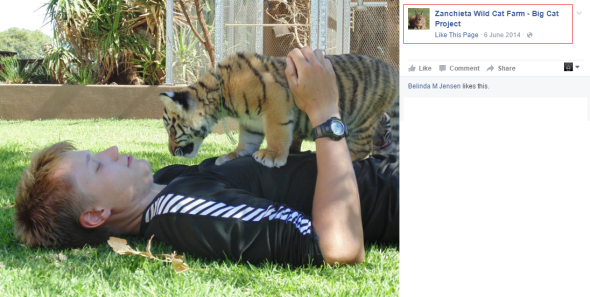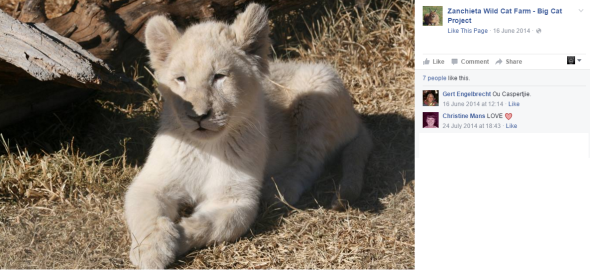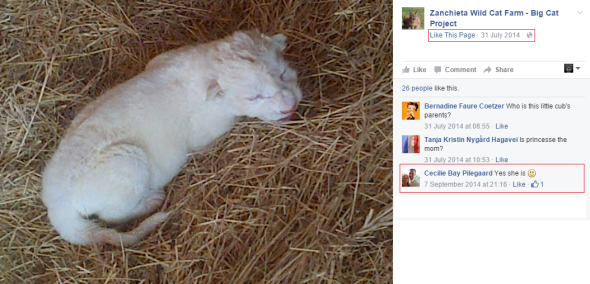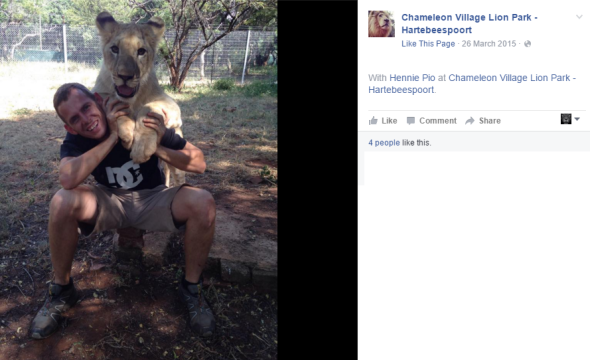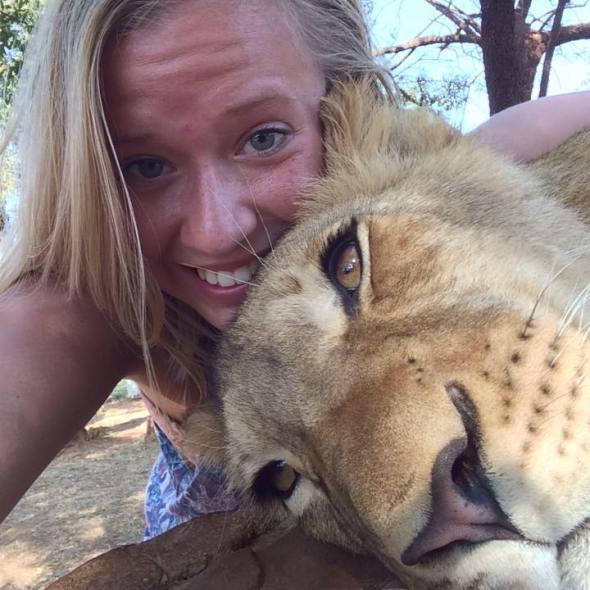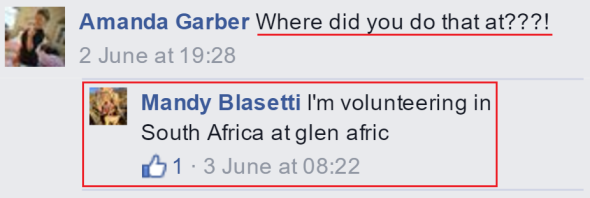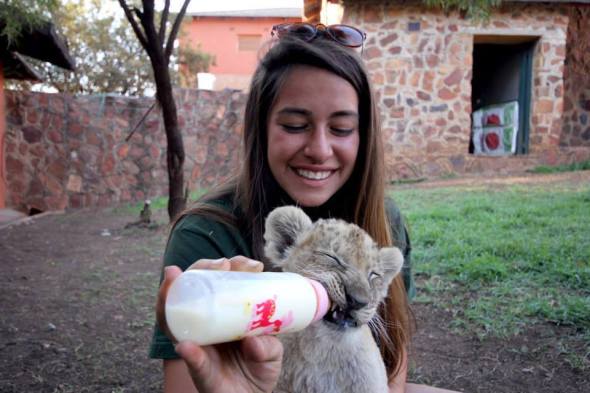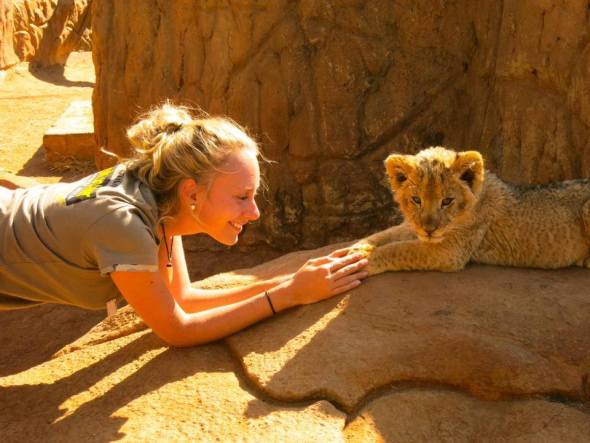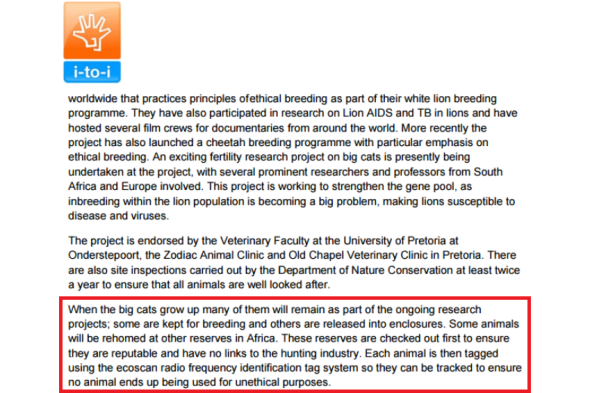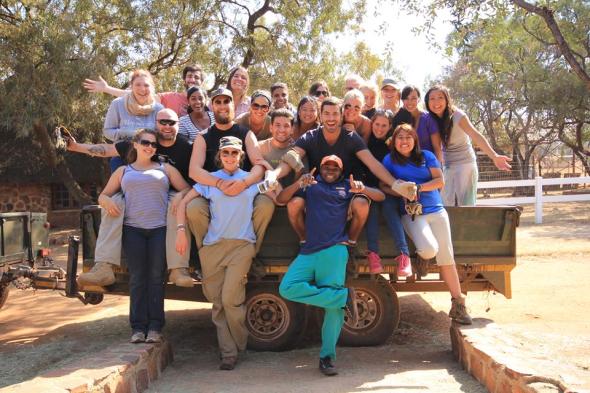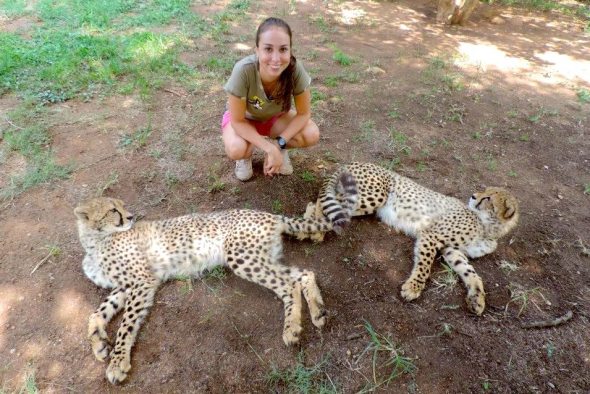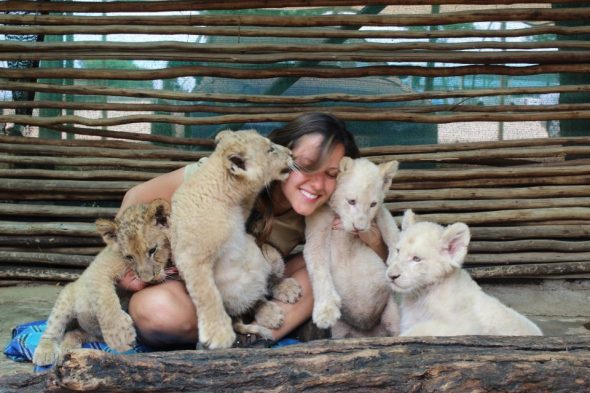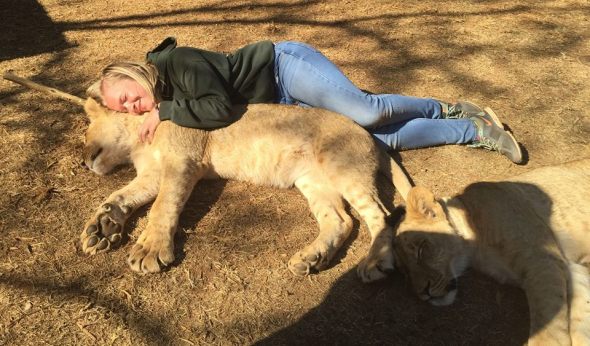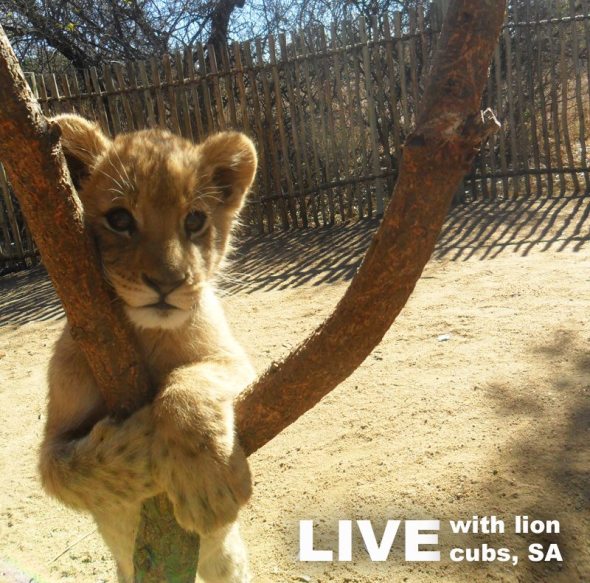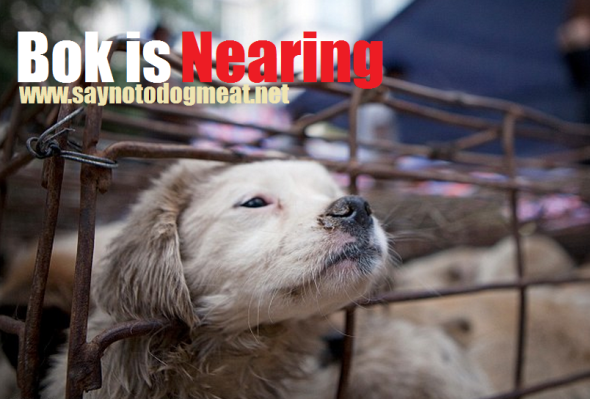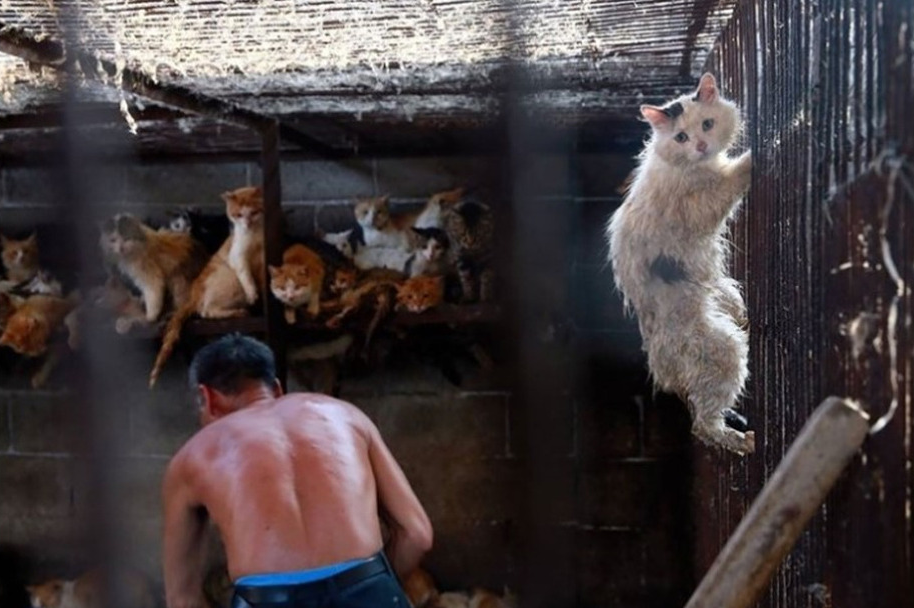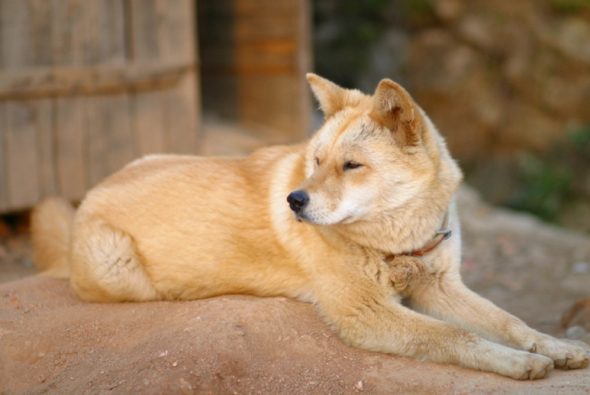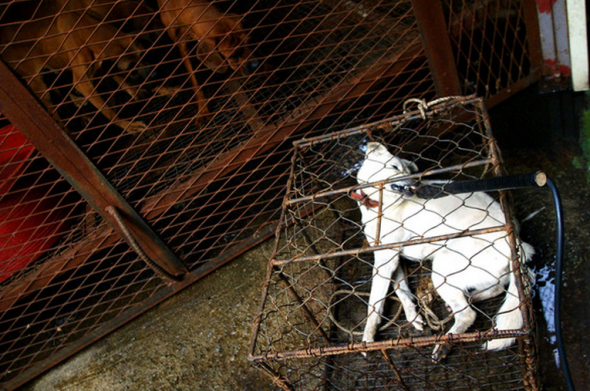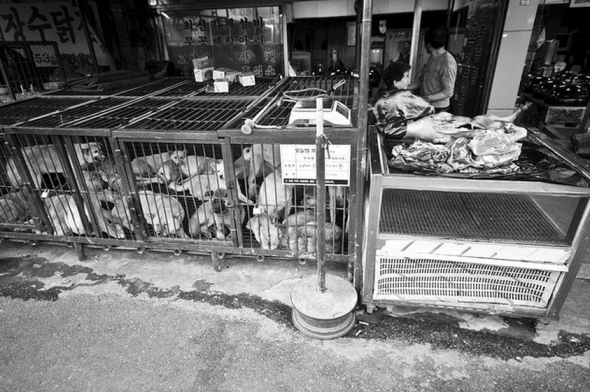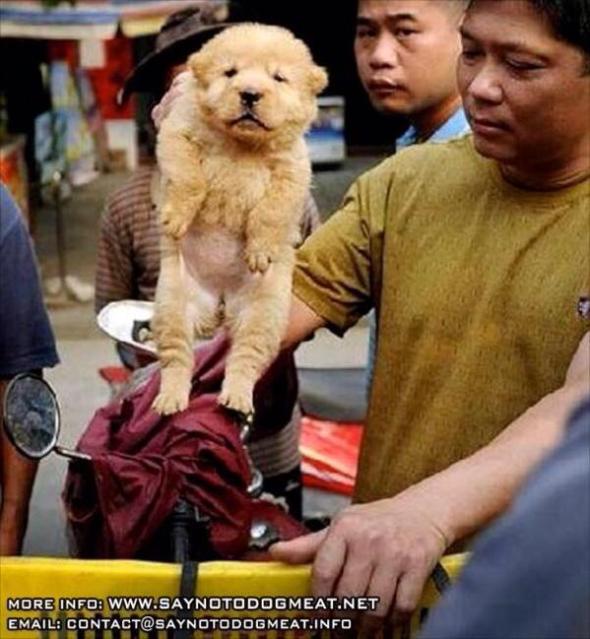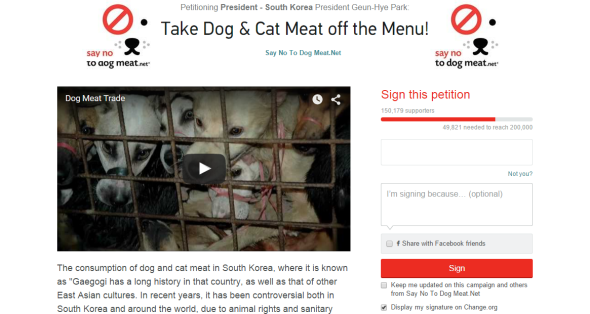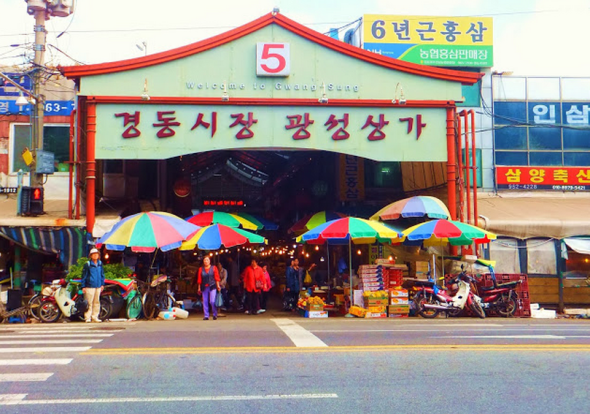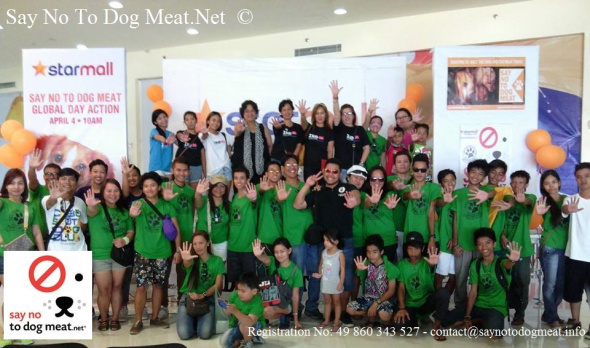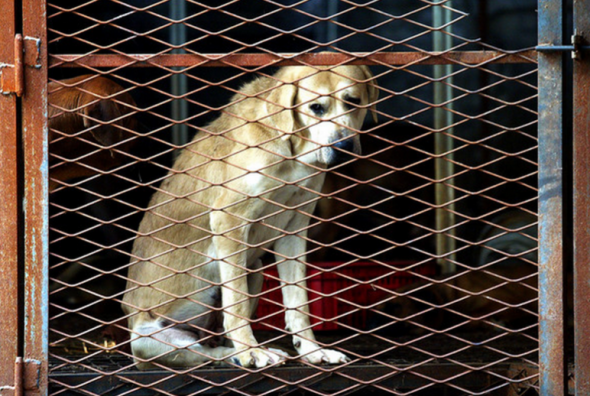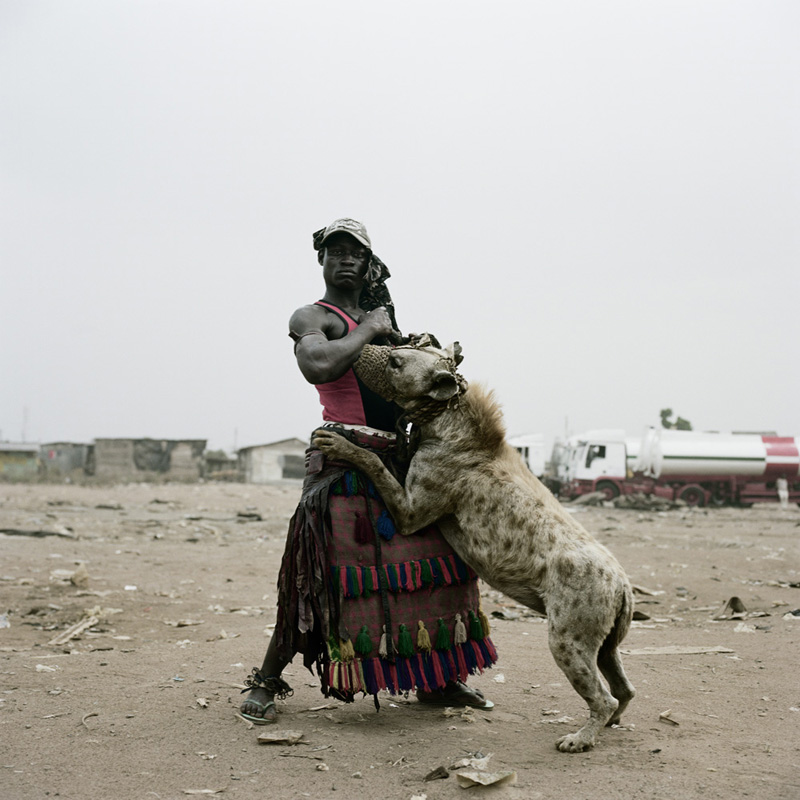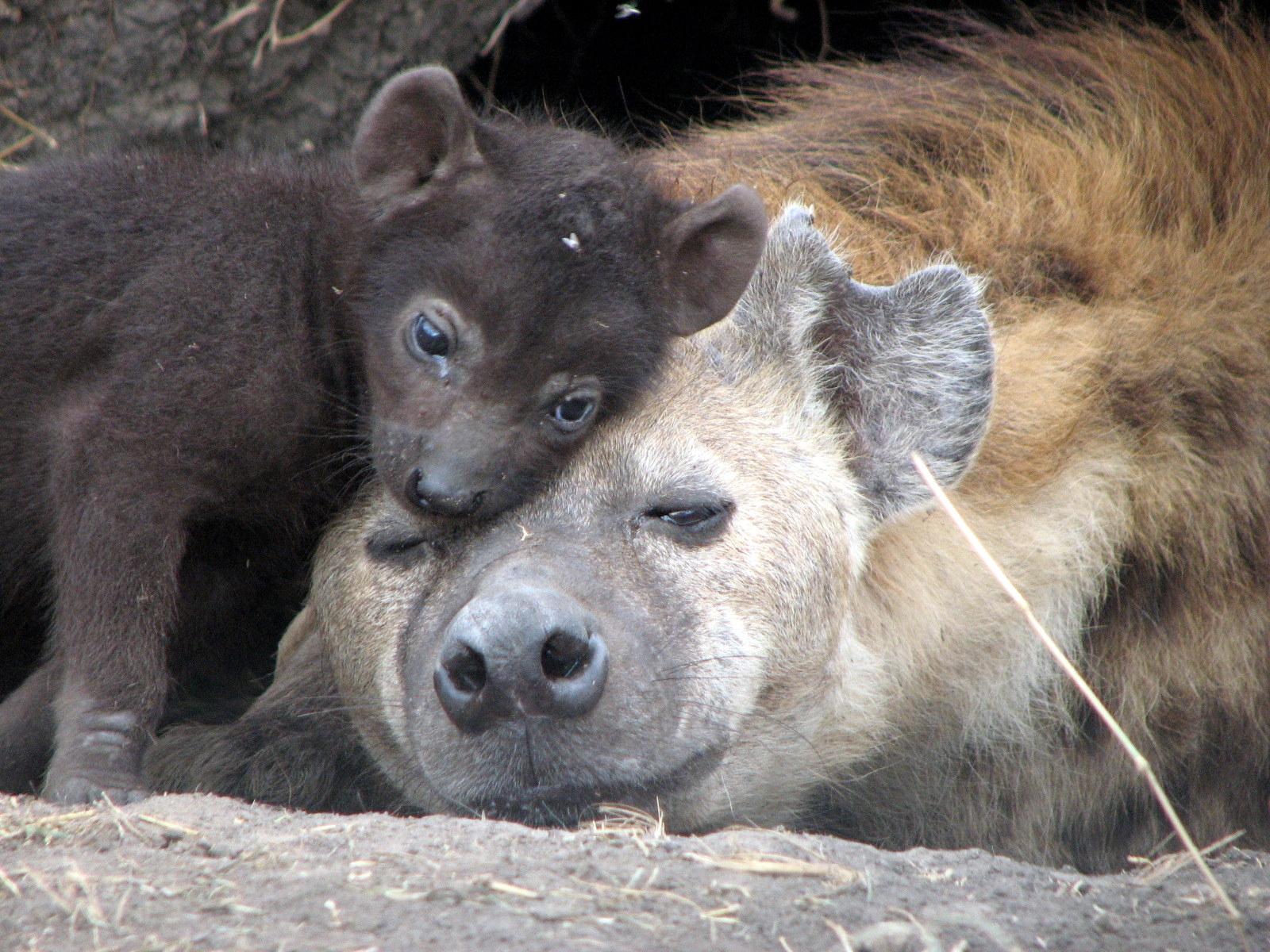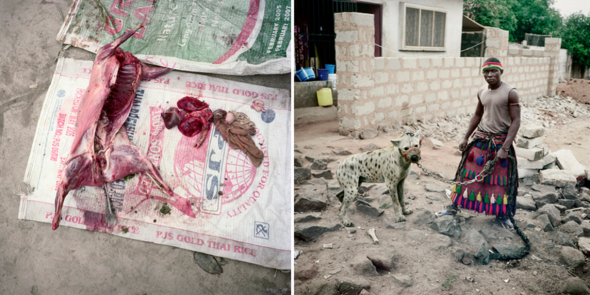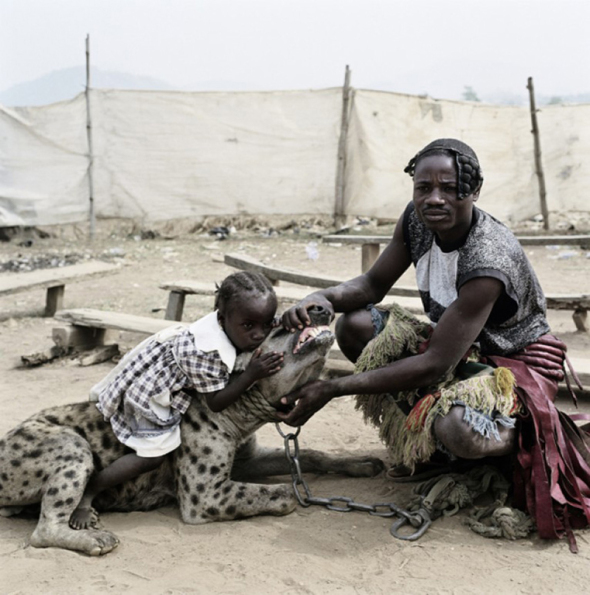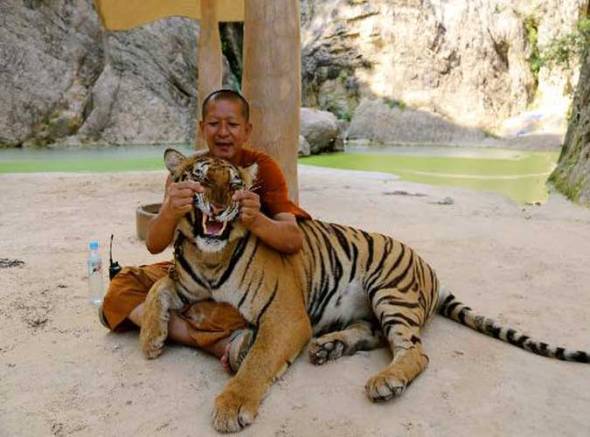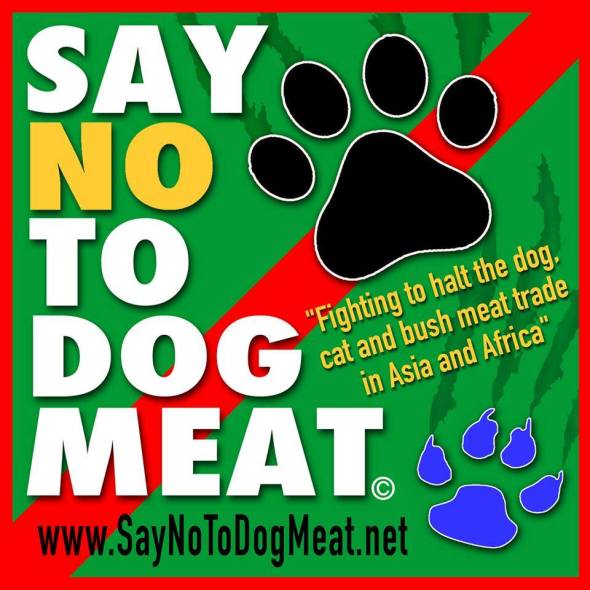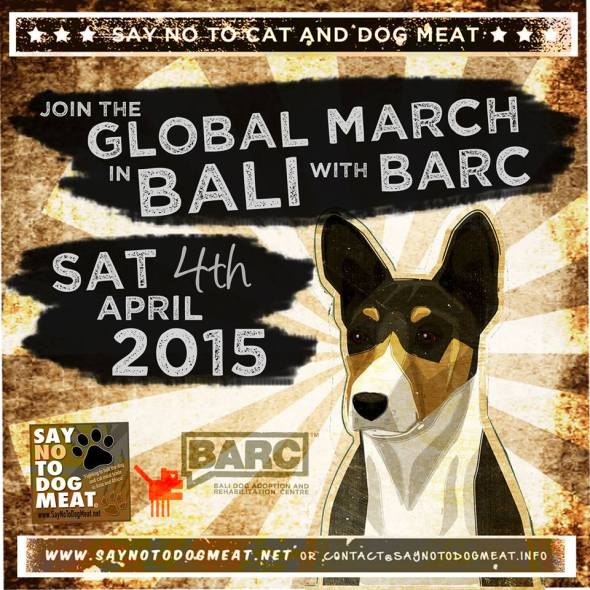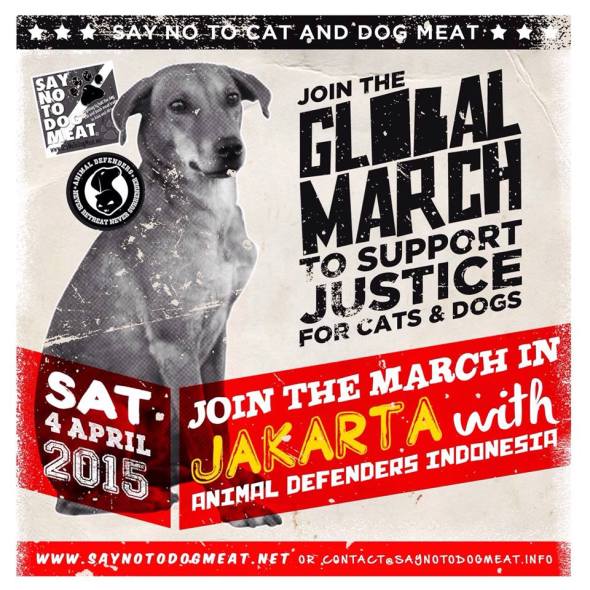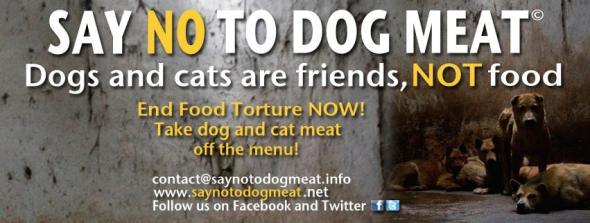HATE CRIMES: ANIMAL RIGHTS GONE BONKERS.
CYBER TROLLING & HARASSMENT - WHEN WILL IT STOP?
PART I
Hi, my name is Dr Jose C. Depre. I run the International Animal Rescue Foundation, which is a self funded organisation founded by myself, and other [unnamed] environmentalists from around the globe. International Animal Rescue Foundation doesn’t ask for donations, however there are links upon our Facebook pages, and websites of which the public can send a donation. All donations go to good causes. Meanwhile, when or if we do urgently require donations, they are banked for anyone of the projects that we require urgent financial assistant for. Donations are then used for that particular [emergency animal or environmental project that we are trying our hardest to resolve], within some of the most hospitable regions on the planet.
Unfortunately even when we show evidence of expenditure, or projects that we have worked on to improve animal welfare past and present, we occasionally fall under some pretty nasty, and at times derogatory criticism from so called animal rights activists. The Vietnamese project of which we are still [self funding], and relying on public funding to establish this rescue has attracted some pretty nasty criticism, and lies from online cyber trolls. This particular project that is ‘now being fronted by the Anti Pet & Bush Meat Coalition has been attacked so much’, we have been forced to stop publishing help links online.
The reasons why we are asking for the public to fund this particular project is due to the fact that we run an [anti wildlife trade and environmental investigations organisation], and not an anti pet meat organisation (as a whole). Meaning that our main focus is that of environmental crimes and, the illegal. wildlife trade. From 2014-2016 we raised an ‘exact’ total of $2,141, which myself the CEO estimated from many banking records and electronic receipts a total of over $3,600 (EST). Regrettably due to the staggering abuse vomited at Intentional Animal Rescue Foundation when we parted from the organisation, (due to unprofessional misconduct from the founder Ms Brown) identified as (Say No To Dog Meat.Net). There hasn’t been a single donation wired to us from June 2015 to January 2016 of which is required to establish a veterinary center, rescue and rehabilitation clinic.
Since November of 2015 when I walked away from Say No To Dog Meat.Net I have been the ‘victim of harassment and cyber stalking’ by a woman identified as Miss Clodagh McCusker, from Belfast, Northern Ireland, that has taken cyber stalking, harassment, bullying and ground stalking to all new levels. Normally these special breed of people I ignore, I haven’t the time, nor day to explain myself or entertain cyber trolls, or respond to them. Miss Clodagh McCusker though has overstepped the mark. Miss McCusker has launched a ‘campaign of systematic abuse aimed at myself, my partner, my friends and even my own family’. Furthermore I am not the only victim of this woman’s anti-social cyber abuse. A Belfast citizen identified as Miss Helen Madden was also a victim of this woman’s vile, despicable online abuse. Please view the screenshot below from Helen Madden.
Image: Helen Madden names the online bullies that have made her life hell. See link.
I have no relation to Ms Helen Madden whatsoever, I do not know this woman however I was made aware that this kind, gentle and caring young lady helped out at a demonstration that I myself and my then ‘co-founder’ organised for the organisation Say No To Dog Meat.Net. Further to this Helen Madden was friends with another woman that helped at the Belfast demonstration back in April of 2015 identified as Ms Clodagh McCusker. When the Belfast Telegraph printed their story relating to the ‘alleged bullies’ above hitting on Miss Helen Madden, Miss Clodagh McCusker then replied with the comment below. I was of course shocked, and found this rather upsetting.
Image: Clodagh McCusker blames me for trolling/bullying a woman I don’t even know?
The screenshot above I actually found quite upsetting. I have never in my life met Miss Helen Madden, nor have I ever verbally spoken to this kind woman, apart from last week after the Belfast Article was published. So it kind of came as a shock to then see my own organisation, and myself (being named as the aggressor). Yet Miss Madden whom has some learning difficulties, then name and the individuals above (within the screenshot). The only comment that myself am guilty of is the article that was printed on our main Facebook page; International Animal Rescue Foundation Africa, with a further story hereto.
Despite the fact (I actually believed Helen, along with countless other people relating to ‘Helen Maddens allegations’ she then contradicts herself within the screenshot below. So the only person whom is lying here is not myself, but Helen as one can clearly see above (screenshot). I personally believe that Helen was lunged down on two of the cyber trolls above, and ordered to redact her statement. Helen doesn’t know myself, like I do not know Helen. However a certain individual I.e Clodagh McCusker, Anne McKinney, Etc do know myself (indirectly). From viewing the screenshot below, Helen has been asked/ordered to speak this utter nonsense, or Helen Madden has basically lied to a press officer. Either way, I want no part in these childish games, and will most certainly not, after trying to help this woman, then have my name slandered online.
Image: So either that are bullying you, or there not, and my involvement in helping you Helen is harassment? I think you need to step back, take a look at yourself and the damage that your causing. I for one know that Clodagh McCusker isn’t just a bully, but an obsessive lying fantasist.
Since November 2015 I have come under some pretty heavy, and at times disturbing trolling, all of which has been reported to my local British Constabulary, and the Police Service Northern Ireland Belfast. A further complaint was sent to Miss C. McCusker’s (ISP) Internet Service Provider, Gmail, and the Hate Crimes Unit. Lastly numerous cease and desists were electronically communicated to Miss McCusker asking her directly, yet politely to cease and desist, and refrain immediately from harassing me online. Please view the image screenshots below for your immediate information.
Image: Final warning to cease and desist sent via myself to C. McCusker
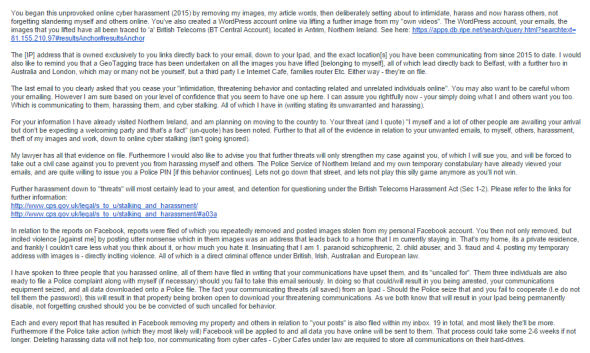 Image: Final warning to cease and desist sent via myself to C. McCusker
Image: Final warning to cease and desist sent via myself to C. McCusker
Image: January 20th 2016, yet another polite warning sent to Miss McCusker
Despite my repetitive attempts of which I politely asked this woman to cease and desist, refrain from communicating to me, even down to blocking her on Facebook, Twitter, and blocking her Internet Protocol Address [IP]. Miss McCuscker then drops a clanger, the clanger is that big, it left me with no other option but to then contact the Serious Crime Agency (SCA) commonly known as (SOCA), IC3, my own constabulary, and the Police Service Northern Ireland. The email below is in response to my polite emails above (two of many), do you the reader believe this to be from a responsible. mature, and adult person?
Miss McCusker threatens in one sentence: “I am looking forward to your move too Belfast, and a lot of people are awaiting your arrival, but don’t be expecting a welcoming party, and that’s a fact”
Miss McCusker then states: “I have never harassed Bethany, (that actually refers to my daughter). Miss McCusker then threatens: “I have form for contacting whoever Jon”.
Miss McCusker then threatens: Now how would you like it Jon if I contacted your mum from the UK, Christine, or Michaela.
Who in their right-mind goes after someone else’s innocent children (or family) just to troll another individual online? Firstly my name is Jose, and not Jon. Secondly my daughter has categorically stated that if Miss Clodagh McCusker contacts her she will be seeking an injunction against her. My own innocent daughter has also been forced to conceal her own identity in fear of her being exposed with lies. What type of (strange individual) goes after other peoples children (or family), whom they are not related too, to strike up a ‘very good relationship with’? Not only is that bordering child abuse and grooming relating to my own child, its also mind-controlling, unwanted, outrageous and totally inappropriate.
At no point have I nor anyone for that matter sought this woman’s parents, or threatened to contact them. However if this unwanted trolling continues, every-single communication will be sent to the parents should they be located, in the hope that the parents can help this rather disturb woman. (Please see the email below from Miss McCusker).
Image: Clodagh McCusker communicating threats to me and my family
Back in January 2016 I was THEN paid a visit by the local Police, to my temporary home that I am currently staying at before, hopefully, my final move to Northern Ireland. On the 24th January at exactly 20:00hrs I was visited by two members of the Norfolk and Suffolk Police. On allowing the Police officers within my home, I was told that the officers had been communicated a complaint from a Miss Clodadgh McCusker, Belfast, via the Northern Ireland Police Service. I was utterly flabbergasted, and shocked at the sheer fact the woman was now, not only communicating lies about me online, making threats to contact my family, but was now wasting police time via concocting malicious complaints..
A PC and PSCO then asked me to consent [voluntary] a search of my home, of which they were looking for ‘evidence relating to money laundering and serious fraud’. I verbally communicated to the Police that this was the second such time my premises had been [searched], on the orders of other Police Departments, relating to ‘fraud’, via malicious complaints. Further to this I instructed the Police to contact the HMRC, and the Serious Fraud Agency, which would have proved my innocence.
The Police were looking for ‘fraudulent banking papers, and anything that would have proven I was indeed guilty of a crime. The images below clearly show [no evidence was located], yet the Police didn’t even bother to arrest this disturb woman for communication of a malicious time wasting complaint. So not only am I being threatened, trolled, my family now the victim of this ‘mentally deranged psychopath’, I am now fearing my door being kicked in from the Police via the communication of (false and unproven lies). I mean, who does that, who wastes Police officers time, who in the ‘animal rights community’ makes up such absurd lies, then basically admits to them in her Gmail emails. Clearly this woman, who craves attention!
Image: Search Warrant: No evidence of wrongdoing located (malicious complaint)
Image: If I had anything to hide I.e Paper money trails, I’d not have consented to a search
But what does all of this have to do with animal rights?, good question. It seems that within the animal rights forum of which I am not nor will I ever be a member of, there is this [egomania issue]. Leaving aside Clodagh’s attraction to myself, which is the reason for all of this above, and not fraud, deception, or womanizing. Anyone that is seen as being successful, is either attacked, belittled, or slammed down by [cyber trolls].
In the case of Clodagh though, she is simply jealous that I am in a relation with a super stunning woman, whom she stated to me numerous times (to stay well clear of). Fortunately I do my own thinking for oneself, and if I see danger, then I will jolly well stay clear of it. Clodagh on the other hand has this fascination with myself, which I can kind of see now why. I complimented her on her looks (out of politeness), and generally spoke to her (giving her attention which clearly someone is not providing). Upon me leaving Say No To Dog Meat.Net, and then my blocking of this woman from my Facebook profile I was then set upon by her and her dog Anne McKinney, (another woman that I have never met or spoken too).
Image: I blocked Clodagh on Twitter, and Facebook, yet this is the reply given?
Despite blocking this woman on various platforms and trying to ignore her, she continues her utmost best to still tag me even on Twitter where I have her blocked. @JoseDepre11 is my Twitter name. One thing I point to here, is how is this woman able to view my profiles, when I have her blocked? Ms McCusker states that I am harassing her, yet clearly in the images below, one can see otherwise. Surely if someone is being harassed, then why continue to indirectly, and directly harass myself, my friends, my family, partner and communicate false malicious police complaints?
Image: Intimidation aimed at myself via allegedly contacting my daughter of unknown origin.
The image above was posted by Anne McKinney, made my Mr Price. As one can see they have been trolling my Facebook platform, despite the fact both of them are blocked. They then go on to state that my daughter [unnamed] states I have been in and out of prison. I can rightly now obtain a Police record that clearly shows I have never been in prison. Quite obviously they know diddlysquat about me, yet are acting so immature as to incite hate, thus making me appear to be some type of arsonist, that goes by the name of Jon (who hates his children)?. “I’m always in prison”? Who in their right mind, at the age of 36 and 51 years of age deliberately concocts such utter childish drivel? (Attention Seeking, as this is what some of the so called Animal Rights Activists do, or should I say, they have nothing better to do than talk utter waffle all day). Further to this - such malicious communications on line can lead to me or anyone innocently being labeled ‘beaten or killed’, how would these two so called women feel then with a murder/manslaughter charge on their head?
Since November 2015 to date I have complained to Facebook and Twitter. Furthermore the Police and other agencies that are now taking these allegations very seriously. Unfortunately the issue with Facebook and Twitter is an ongoing battle. The evidence below clearly shows just how many times I have reported Miss McCusker, and still she continues. In total 19 removals of my images, and more, below are just a handful of screenshots.
Image: Miss McCusker’s Facebook page, I had to report on at least 19 separate occasions for theft of my own data, images and posting sensitive materials.
Image: December she re-posts further libel.
Image: December 16th - further theft of my images removed
So Miss McCusker and her chums have moved on to Twitter, where they seem to think that posting on this platform grants them immunity. Which for now it may well do. Unfortunately regardless of how much nonsense she Tweets, the fact of the matter here is that she is committing a crime. So what next?
The law is next, and since December I have now logged over 308 separate (evidence screenshots) of (direct cyber harassment, unwanted communications, libel, threats, indirect harassment, communications sent to relatives, and direct inciting of violence/and/or/hate onto Twitter and Facebook, down to Gmail). There’s more too.
The Protection from Harassment Order 1997 (Northern Ireland) is similar to the Protection from Harassment Act 1997 (England and Wales). To view the legislation is Northern Ireland visit http://www.statutelaw.gov.uk and search under Protection from Harassment Order
I am being harassed by some narcissistic lunatic, and if you think the data above is (tame or even concerning), you’ve not seen nothing. The vicious and outlandish communications this troll has sent me directly and indirectly via the [animal rights movement] is outrageous. Lastly what TYPE of so called ACTIVIST intimidates CHILDREN and HARASSES THEM? Clearly those with nothing better to do, living in Belfast, Northern Ireland.
I will continue to ignore this troll, which is the only thing one can do. However documenting on her behavior is critically important. If my life is placed in danger via inciting hate, inciting violence, stating I am an abusive father, or anything other - you’ll sure to hell know if I am to vanish, this is whom is to blame. I have asked repeatedly for this troll to leave alone.. Sadly she’ll not stop until someone is seriously hurt, and here’s me thinking that animal rights activists are not not into [violence] sigh.
UPDATE: 17.02.2016
Despite trying to do my job accordingly all of which is funded by myself. I now have Ms Clodagh McCusker and her new found chum Miss Karen Cole stating that I am recruiting an ‘armed and dangerous gang’. The very armed and dangerous gang that hopefully will be shielding teams of vets, environmentalists, and carers from being attacked by terrorists. Please view the screenshot below [clearly this woman also like Miss McCusker has issues].
Image: Karen Cole runs the Twitter account for NotForMeat
What is Karen Cole and Miss McCusker speaking of though? Lets take a look at how lurid, immature, and utterly pathetic these trolls are dropping too. Further to this allegation, its allegations such as this, that if aimed at the Police would unfortunately the [via malicious time wasting allegation] see Police act with an [armed response unit], at myself, in the belief that I am in some way recruiting terrorists for overseas illegal actions. (And here is me believing this woman is SANE). Please view the screenshot below that was posted by myself in relation to the ongoing situation in Taiz, Yemen, Zoo.
Image: Why would a so called animal lover Karen ‘stalker troll’ and Clodagh McCusker NOT want us to fund a volunteer unit to help these animals and save innocent people from being murdered. Do these two girls honestly think that Taiz, Yemen is some kind of playground? Looks that way. What Karen Cole and Clodagh McCusker are trying their utmost hardest to do, is to have me arrested, via concocting MORE complete crap, false Police complaints of which the Police if not provided the truth from the (source), would see this as me training armed gangs. Not much of an animal lover are you Ms Cole or McCusker. Please click the link below.
SOURCE INTERNATIONAL ANIMAL RESCUE FOUNDATION AFRICA
TWITTER TROLLING ACCOUNTS THAT REQUIRE IMMEDIATE TERMINATION.
Anne McKinney: https://twitter.com/Annemck0 (Belfast)
Clodagh McCusker: https://twitter.com/clodaghmccusker (Belfast)
Karen Cole: https://twitter.com/SaveStBernards (France)
Karen and daughters Twitter account: https://twitter.com/_AnimalBuddy (France & UK)
Thomas Price: https://twitter.com/canklehunter/with_replies (Australia)
Thomas Price: https://twitter.com/GelatiJam (Australia)
Robert Lyons: https://twitter.com/Robertlyons1902 (London)
Dr Jose C. Depre
What Part of Unethical Conservation Don’t You Understand? | Endangered Species Monday Special.
ETHICAL OR UNETHICAL
Last week we wrote an article in relation to the GoEco student/tourist travel firm, and the Zanchieta Wild Cat Farm. As usual we came under some pretty heavy criticism as apparently we were yet again in the wrong. Within many of the emails that we have received, students have literally blasted us for depicting themselves holding, petting or interacting with African predator cats, many of them cubs that seem to have no mother insight, and could be re-rehabilitated into the wild to boost wild predator populations up.
Back in 2015 from January to December we rolled out yet again another mass educational and awareness campaign aimed at mainly students and overseas tourists that paid up to $1,200USD for a two week visit to the many petting farms, lodges and resorts on the African continent, that was projected onto our main Facebook platform.
I.A.R.F.A’s educational and awareness campaign (2015) saw over 200 students give up this practice (one of many articles you can read here). Furthermore Zebula Golf and Spa Club that was hosting lion petting activities withdrew the practice, and removed adds from their main website. An African zoological garden removed its advertisement for cheetah petting, thus later ending their petting experiences, and finally a painter and artist that was promoting such activities eventually stopped.
The campaign also saw a decline in profit in relation to the Ukutula Game Lodge, and customer star rating, and less students visiting from 2014-2015. Amanzi Travel located within the United Kingdom have also allegedly withdrawn their lion petting advertisements focusing more on ethical conservation. (Amanzi Travel are still the focus of our attention though). The list goes on, and frankly we’re not going to stop until these practices are ceased immediately.
From 2014-2015 the organisation Blood Lions pounded the streets and cinemas (internationally) in relation too the petting and canned hunting industry which has seen quite a significant response from the petting and hunting fraternity too). In the wake of much controversy France has implemented an immediate ban on lion trophies being brought into the country. Now PHASA are at the throats of (Sapa, reported by Blood Lions) demanding the South African Predator Association immediately responds to the canned hunting problem that’s sparked fireworks around the globe. (See video below).
Unfortunately, despite the mass effort that we and others have placed into these projects, students, tourists, even trainee zoologists and veterinarians still thrash it out with us, believing that what they are participating in, is all good fun and doesn’t do the animal any harm whatsoever. Below are just a handful of the lame excuses that we read every week emailed to us in anger.
LAME RESPONSES FROM TOURISTS / PREDATOR PETTING
“None of these cubs were harmed and are all living a peaceful happy life”
“Your information is wrong, petting doesn’t harm the cubs, the cubs don’t have a mother, we’re helping them and their cuddly, so what!”
“Please research your information before posting my image, there is no hunting on this farm whatsoever, leave me alone”
“The image you posted of me misrepresents me, all I was doing was holding the cub for a Facebook photo avatar. I’m doing nothing wrong”.
“Lions are so cute, I can’t wait to go back again”
“They advertise release programs, and I participated in a release program within a fenced in area, none of the animals were harmed, or killed, what’s your problem?”
The above lines are just a handful of lame excuses that we read everyday from tourists, students, petting farms, and alleged predator rehabilitation sanctuaries. Furthermore no matter how much we try to explain, either in basic English or with science - the fact of the matter is this: Many students, tourists and sanctuaries fail to see the damage that they are doing, and contributing too.
Many of the students and tourists that we’ve highlighted as contributing too unethical conservation also scold us for using their images, stating that we’re misrepresenting them holding or petting a “predator cub”. So we’re going to try things a little differently. Back to basics. Below we’ve included a number of images, and under them images we’ve written a brief extract in relation to what’s wrong with each image/ real life scenario. However before we start, lets take a look at what real ethical conservation is within the “captive breeding and release industry”.
Image: Basel Zoological Gardens.
The image above was taken at Basel Zoological Gardens, and as you can see mother, father and three young cubs are happily strolling in the park on a fine late Spring day of (2015). There are no tourists, students or even the hint of petting, interaction, cuddling or manhandling on show here. Mother’s Oka and Uma gave birth to their cubs on May 28th, and June 15th (2015).
Many people may be asking, why are lions being bred and reared within a foreign non-African zoo? The answer to that is simple. Lions are listed as vulnerable (IUCN Red List population map), and while there may be many lions in countries such as South Africa where security is more tight. North and West African lions are practically extinct. Southern Africa is probably one of very few regions now on the African continent that holds more “larger populations”. Unfortunately within the past twenty years Africa has seen a staggering decrease of lion populations by over 30-50%. (See video below.)
Zoo Basel supports the Big Life Foundation, which works in the Amboseli-Tsavo ecosystem in Kenya to protect the Lions. The Zoo is also a participant in the EAZA Endangered Species Breeding Programme for African Lions. This means that every-single lion you see within a zoo that’s part of the EAZA Endangered Species Breeding Programme will eventually be released into the African wild, they’ll not be kept for photography purposes, or to interact with.
For release programme’s to be successful human interference must be kept to a bare minimal. You’ll not see any petting, interaction, man-handling or public photography exploitation going on here. EAZA’s Endangered Species Breeding Programme is what we refer to as “ethical conservation within captivity”, and there is much evidence in relation to EAZA’s working projects too.
UNETHICAL CONSERVATION PRACTICES
Below are prime examples of “unethical conservation practices”. From America too the continent of Africa you’ll not see EAZA’s Endangered Species Breeding Programme allowing this type of behavior. The reasons why you’ll not see such behavior played out within anyone of EAZA’s projects is listed below for your information in plain English.
GENERAL PETTING
Image: Sarah Haley lion petting United States
Back in 2012 Sarah Haley from Fayetteville, Arkansas, United States visited the Wild Wilderness Through Safari. Sarah’s reasons for visiting was quite simple. “I mostly went to play with the lions”. As one can see these lions are very young, and as normal there seems to be no mother or father in sight. What Sarah doesn’t realize is, the mother would have had her young ripped away from her at a young age, just so tourists and students can play petting.
Mother and cub[s] would have been left in quite an emotional state, suffering psychological trauma, and would have pined for one another. Its more or less the same behavior a new born baby and mother will play out when separation occurs. Did it make you feel good Sarah knowing that you was holding a pining mothers cub that simply wanted to behave like any normal human or animal mother?
There doesn’t appear to be any-form of breeding programme in operation at this alleged zoo either. Furthermore this cat will never be released into the wild, because all of its natural instincts have been removed by the human, and imprinted from the human onto the cub. Yet on the African continent we’ve lost over 50% of our lion populations. There doesn’t seem to be any form of hunting advertised, however we are somewhat suspicious here as to why so many cubs are being reared at this zoo, and what the so called zoo’s actual intentions are.
MISHANDLING
Image: Unidentified male at the Zanchieta Wild Cat Farm
Every month we bring into question many safaris, big cat projects, lodges and zoos. Many of them do not participate in hunting, while others are more than “questionable in relation to their mission statement and hunting”, and what they are actually projecting into the public domain (which most of the time doesn’t support their mission statement).
Furthermore contradictions from the owners in regards to their companies mission statement are rampant among such alleged rehab and non-breeding facilities. The image above seems pretty innocent, and quite adorable to most. The image was posted onto the Zanchieta Wild Cat Farm Facebook page of which the Zanchieta Wild Cat Farm has venomously protected as innocent.
Zanchieta have even gone to great lengths in the past week basically stating that were totally wrong, and everything that we’ve located in relation to their company (above and below) is more than legitimate. An insult that we did read stated: “We (Zanchieta Wild Cat Farm) know that this post by I.A.R.F. was done with good intentions, from people who, like us, love animals and fight for their rights”. We do indeed love animals hence why this article is proving wrongdoing and unethical conservation practices. I.A.R.F.A do not under any circumstances support such activities nor will we promote them either. (Please continue reading).
What the young unidentified male seems to be forgetting is that this young cub “may” have been removed from his/her mother at the prime milking age of three weeks old. PAAZAB’s Husbandry and Veterinary Guide states: The cub should also be supported under its bottom with the other hand, cubs must be supported correctly as to not injure the young developing cub. Further to this we all know that cubs aren’t exactly hygienic like their adult mothers and fathers. Regardless of how much Zanchieta Wild Cat Farm defends themselves, the images projected onto their Facebook page are clear signs of “exhibiting to profit from money”. The worst is to come.
Cubs this age want roam, explore, test their young muscles to develop coordination, and sleep for extended periods of time without interruption. They dislike being handled. While Zanchieta Wild Cat Farm states that they protect, rescue and rehabilitate, this behavior is neither protecting the cub, or (at the least) trying to rehabilitate this young cub into the Asiatic wild where the number of tigers are about 3,200 if that remaining in the wild.
Zanchieta Wild Cat Farm also hosts a number of lions identified as the (Timbavati white lions). This area of alleged predator conservation has been a great focus of concern to us, Timbavati white lions are practically extinct. There is said to be more white lions in captivity than in the wild. Meanwhile within the wild there is alleged to be no fewer than 13-20 individuals if that. So why is this predator rehab farm and rescue not helping to support white wild populations with captive breeding programmes? (See video below)
The owner of Zanchieta states via her website “I have never and never will breed or raise any BIG CAT at Zanchieta for onward selling to a third party. Our white lion pride has grown from the original male and female pair to five lions and these lions will never leave Zanchieta”. We believe this statement was written back in 2010 when the main domain and site was formed and registered.
NO THREATENED SPECIES RELEASE PROJECTS
Image: Timbavati white lion cub 2014.
Image: Timbavati white lion cub (new born) 2014.
The Zanchieta owner states: “No further natural breeding will occur as the females are on contraception programs. Our two male brown lions and our brown lioness were purchased as cubs and have never been allowed to breed. They too will never leave Zanchieta.” That statement has been on the main Zanchieta website since 2010, yet the lady is not prepared to release these lions into the wild via ethical conservation projects. Timbavati white lions are as explained (critically endangered), so this statement is very questionable.
Again where is the mother, but more importantly why is Zanchieta stating that none of her lions will be allowed to leave the farm? That’s a classical sign of unethical conservation for reasons that we do not fully understand. This lion as one can see (above) is only a few days old. Furthermore as the owner states none of the lions will be allowed to leave the farm.
If you are familiar with the sub-species of the Panthera leo krugeri, you’ll also know that their populations within the wild are dwindling. So theoretically any good “rescue and rehabilitation project” that states they’re not breeding (when they clearly are), would try to improve Panthera leo krugeri populations within the wild like EAZA’s Endangered Species Breeding Programme. So in our (expert opinion), this farm is nothing more than a breeding and captive facility. Indeed there are some release projects ongoing however as the owner states (no lions leave).
So instead students, tourists and volunteers can all help contribute to (nothing). That in our opinion is a complete waste of money, money that could be spent elsewhere on actual breeding and release projects to sustain threatened populations of predators.
ANIMAL ATTACKS
Image: Chameleon Village Lion Park
Whenever we explain to tourists and students about the petting and interaction industry, they’ll often absorb only a certain amount of information (in most cases), which is why education needs to focus more on every aspect of this industry rather than just hunting. Many Non-Governmental Organisations, and “anti hunting groups” out there, will categorically state on locating a petting/breeding farm, that hunting is the major player regarding their find. Most of the farms, lodges and sanctuaries that we’ve located aren’t actually connected to hunting whatsoever.
So when a tourist or student hears them words I.e. hunting is not ongoing, they automatically believe that all is okay, we’ve got our wires crossed, and we’re simply trying to tar the name of a farm or lodge. International Animal Rescue Foundation Africa researchers every single piece of detail on all industries and practices that we do not support practicing unethical conservation. That includes petting, disease, hunting, abuse, exploitation, and failure to keep to promises (I.e): release programmes, or helping increase threatened species in the wild.
Meet Mr Hennie Pio from South Africa. The image above looks very innocent again, and both the visitor and lioness seem pretty much laid back. Tourists need to remember that predators are like cats and dogs, they all have deeply embedded within their genes (hunting and predator behaviors). For E.g. I once owned a Springer Spaniel rescued as a puppy.
That wee dog was domesticated like any other dog into an adult dog. A few years into life and on a long walk, my pet dog jumped the lead, and naturally went after hens and chickens killing three instantly with a single bite to the neck. Yet the dog hadn’t seen a chicken or hen before, nor had she been raised to hunt. The same applies to lions, tigers, cheetahs, leopards, and jaguars Etc. Just because they’ve never hunted naturally in the wild, and had humans imprint their natural behaviors onto them, doesn’t for one single minute mean that, that animal will not attack you.
Listed below are real life captive predator attacks that left their owners or keepers, tourists and visitors with life threatening injuries or in some cases death did occurred.
WHEN CAPTIVE PREDATORS ATTACK
Jan 21, 2016 Australia: A 12 year old tiger has attacked a keeper at an Australian zoo founded by the late Steve Irwin. The incident, which took place Thursday morning at the Sunshine Coast’s Australia Zoo, left 41-year-old Che Woolcott with “significant puncture wounds” to his head and forearm, according to local media reports. He was treated at the scene before being transferred to the hospital.
Nov 29 2015 Malta: Ħal-Farrug zoo was closed by its owners after a tiger severely injures a 3 year old boy. A spokesman for the zoo said the incident happened when the two handlers were walking the “friendly” tiger, which they had raised, outside its cage since it had been slightly unwell. The tiger was lying on the floor when the incident happened. Upon seeing the animal, the boy ran towards it, prompting the tiger to raise its paws, lashing the child in the face in the process, the spokesman said.
Jun 1, 2015 Johannesburg, SA: Katherine Chappell, 29, a visual effects artist for Game of Thrones, was killed and her tour guide seriously injured in an attack by a lioness at the Lion Park near Lanseria. The two people were travelling in the car with their windows open. It’s understood a lioness jumped through the open window, biting the woman who was in the passenger seat. The driver, a tour guide, was badly injured while attempting to free the woman from the animal’s grasp. The park’s Scott Simpson said, “There was a car driving to the lion camp and the lioness came through the window and it bit the tourist. The ambulance arrived quite soon but the lady has passed away.” Three months ago an Australian tourist was bitten in the thigh while driving though the park, also with his window down.
Please view the video below which shows the worlds top ten predator on human attacks, Mr Hennie Pio is in our opinion a very lucky man, like most of the students, tourists and visitors that man-handle allegedly “friendly hand reared predators”. They’re only friendly if they want to be. When you place yourself within a predators environment your acting irresponsibly, furthermore if that animal attacks you, its very likely the animal will be shot dead.
Lastly if your lucky to walk away with minor or serious injuries its highly unlikely that your insurance will cover you, and you have very little chance of receiving compensation - because you placed yourself in that predators environment.
ZOONOTIC DISEASES
Image: Helping Hands for Underprivileged Children
While we all like to visit animal shelters, and provide a helping hand, one will find that some animal shelters and farms in the Western Hemisphere will point out to you the notices that inform you not to pick the animals up, touch the animals, feed them and always ensure that your hands are washed should you come into contact with animals. The reasons for these “polite notices” is to ensure you do not fall ill with anyone of the known zoonotic diseases that are fatal in some cases.
The organisation identified (above) as Helping Hands for Underprivileged Children is where the image above derives from (click the link above that’ll direct you too the Facebook image). The image was picked due to myself being a parent, and because I know just how easy it is for a child to unknowingly place their hands within the mouth dozens if not hundreds of times a day. The data below we do advise you take seriously.
When zoonotic diseases pass from animals to humans, pandemics can result. When a pathogen leaps from some nonhuman animal into a person, and succeeds there in making trouble, the result is what’s known as a zoonosis.
The word zoonosis is unfamiliar to most people. But it helps clarify the biological reality behind the scary headlines about bird flu, SARS, other forms of nasty new disease, and the threat of a coming pandemic. It says something essential about the origin of HIV. It’s a word of the future, destined for heavy use in the 21st century.
About 60 percent of all human infectious diseases currently known are shared between animals and humans. Nearly all zoonotic diseases result from infection by one of six kinds of pathogen: viruses, bacteria, protozoans, prions, fungi, and worms. Toxocariasis is a mild zoonosis caused by roundworms; you can get it from your dog, cat or in this case a predator. But fortunately, like your dog, cat or predator, you can be wormed. On some farms the owners lie to the public, and there is no way of telling if these animals are treated. Should the animal not be treated as the owners have advertised - your insurance doesn’t cover this either. Your unlikely to be compensated, and you could spend anything from 2 months to 1 year+ off work, or out of action.
Fore more information on zoonotic diseases in lions click the link below. here http://cbs.umn.edu/research/labs/lionresearch/research/diseases
We have deliberately left out all mention of hunting within this article, because frankly many tourists, students and visitors that visit predator farms seem to believe that if hunting is not seen as the “major problem”, then all is as explained pretty much okay. The petting and interaction industry can at times be directly related to hunting, however there are as seen above other issues that you need to take into consideration over hunting.
If you believe an image that we have posted “misrepresents you”, then just stop and think how that individual predator cat thinks about you misrepresenting them as a cuddly “pet”. International Animal Rescue Foundation Africa supports all EAZA’s breeding projects, reputable projects that do take in predators that are unable to be released into the wild, I.e: circus, rescues, domestic rescue Etc. We are able to view the lies and contradictions within each alleged rescue, lodge, farm or sanctuary and can if required go to great lengths to prove “unethical conservation practices are being played out here”, with more than sinister motives possibly attached.
This article hasn’t been written to attack, or place blame, but more point to where problems are occurring within the predator breeding and petting industry. If your allegedly rescuing, and rehabilitating then please print and practice just that. If your not breeding and have stated all your animals are on contraceptives, then keep to that promise. If you knowingly understand ethical conservation and really do plan on helping wildlife in their endemic wild, then please practice that. Please do not mislead the public into thinking that your indeed 100% ethical - as we will find you, and highlight them problems always steering the public into the correct conservation path.
If you feel that you’ve been led astray and would like to visit and participate in ethical conservation, please click the links below.
EAZA: http://www.eaza.net/about-us/vacancies/
WORKING ABROAD: http://www.workingabroad.com/projects/south-africa-lion-volunteer
PROTRACK: http://www.protrackapu.co.za/news-blog
BIG CAT RESCUE: https://bigcatrescue.org/get-involved/volunteer/
RHINO ORPHANAGE: https://www.helpgoabroad.com/volunteer-abroad/specialist-rhino-orphanage-and-rehabilitation-centre-2306/
Thank you for reading.
Chief Environmental Officer
Dr Jose C. Depre.
Where Are Our Children? Brutality of South Africa’s Past.
WHERE ARE OUR CHILDREN?
Introduction:
Despite our best efforts to educate and push awareness into the public domain in relation to big cat hunting and the petting industry in South Africa and neighboring countries. We have uncovered a rather large core of dedicated students and volunteers from America, Canada, eastern and northern Europe and South America that still defy the basic knowledge made public, that what they are practicing is harming both captive and non-captive felids. These students actions are contributing to the spread of disease and is supporting abuse no end. Furthermore International Animal Rescue Foundation Africa’s Environmental Investigations Unit has unearthed countless British travel agencies, South African universities and even veterinary establishments that support the petting industry. (Image credit Nick Brandt)
The Petting Industry Explained:
Since the release of the Blood Lions documentary one would have thought that students whom continue to visit these seedy and corrupt lodges, parks and alleged reserves, would have taken note that their behavior is more a hindrance to conservation and wildlife alike, rather than supporting ethical conservation itself. Unfortunately this ‘hardcore group’ of mostly disrespectful, uneducated students and volunteers have simply brushed that advice and education aside. The petting and hunting industry within South Africa is increasing in size, despite vast reams of data and evidence made public that clearly shows these industries have no value to conservation whatsoever.
International Animal Rescue Foundation Africa made it quite clear that we would expose students, volunteers and tourists that defy basic conservation education, while participating in unethical and abusive non-conservation tourism. Trainee veterinary technicians, private vets, school leavers, trainee zoologists, backpackers, doctors, judges down to missionaries, pilots and even celebrities are all contributing to the extinction of our African Lion, Cheetah, Leopard and even non-endemic Tigers. While we are aware that some infant and adult cats have been rescued via the many lodges, parks and farms within South Africa, and that other animals simply cannot be released into a reserve, the fact of the matter here is that breeding is ongoing, interaction and abuse is rife, and little if any reintroduction programs are being seen. When we investigated the industry back in 2011 never did we expect these pseudo conservation practices to skyrocket to gargantuan proportions.
Below we have included a list of students and volunteers down to visiting tourists that continue to place our African wildlife and captive species in danger from a multitude of virus’s, diseases down to actively contributing to the extinction of our threatened wildlife not forgetting abuse being played out. We have given many volunteer agencies, tourist agencies, lodges, parks and reserves ample time to clean their unethical fake conservation behavior up. They have all bar one refused. We now have no choice but to continue with our actions in the hope that this will open visiting tourists eyes, their employees eyes and teaching establishments that these individuals are aligned too, that this practice and pseudo conservation behavior must stop here and now!
Furthermore we are naming and shaming travel agencies, student gap agencies down to veterinary and South African universities too. When watching the first screening of Blood Lions in South Africa some months back, I knew that harsh measures had to be taken. We are not just fighting the main industries here, were battling multi-million if not billion dollar companies that are all aligned to one-other directly or indirectly. The whole purpose of this article (I of IIII) is to begin breaking the link, showing the evidence of pseudo conservation, educating travel agencies and shaming those that continue to defy basic and scientific education. Furthermore we are without a doubt going to bring these agencies and industries to their knees financially while continuing to expose those that abuse our captive and wild animals.
“STUDENTS & VOLUNTEERS PRACTICING UNETHICAL AND NON-GREEN CONSERVATION IN AFRICA”
The following list has been compiled showing both visiting students, volunteers and supporters of the petting industry within South Africa. We are not prepared to stop with this exposure while the industry continues to boom.
Douda Bis, Robyn Robles from Anglia Ruskin University, Hongyi Fan-devalois, Mandy Blasetti a Veterinary Assistant/Technician at Banfield Pet Hospital, Isabel Quiñone from Ejecutiva de Ventas at Diafrom, Connor William from Lancaster (village), New York, Kormákur Ingólfsson that works for Erhvervsakademiet Lillebælt, Iris Joensen that studies at Tåstrup borger og realskole, Heidi Arsenault a Plant Pathology Technologist at Canadian Food Inspection Agency.
Truman Shumway, Bernadette Pieterse who’s a Ranger at Glen Afric Country Lodge, Laura Victoria that studies at Rutgers University, Johanna Noseworthy that works at Inclusion Powell River, Eleanor Skovgaard that studies at the Scenic Artisan at University of Delaware, Alexane Francisci studying at the Concordia University, Laurence Vanmeerbeeck from Brussels, Belgium.
Lindsay Richardson that studies at ‘a’ American University, Luke Sparkes that studies at Oaklands College, St Albans, Johanna Eskelinen that works at the Yacht Week, Sharon Franks a Waitress at Grand Central Basildon, Capucine Bénazet, Lycée Guy Chauvet, Abby Ellison Ashley Snyder a Bartender/ Server at Outback Steakhouse, Emma Jayne Palfreman (self employed), Henrik Guldbrandsøy that studies at the Bergen University college, Fabienne Thoma that studies at the Zurich University of Applied Sciences/ZHAW, Caitlin Ferguson that works at Poppy and Pint.
Doug Richardson that studies at the University of California, Santa Barbara, Nadia Borg that works at Forbrugsmateriale Produktion at Struers ApS, Sue Harrison Kasperek, Eirik Lerum Vigerust from Boulder, Colorado, Torfinn Rønquist Antonsen that studies at Ørland videregående, Naomi Westhof a Highlight Editor at Sheffield United, Emma Enea whom is a Wildlife Coordinator at Nemacolin Woodlands Resort, Sandi Stein Blasetti that studies at the University of Maryland University College, Kayleigh Harrop that studies at the University of the Highlands and Islands, Roberto Francisco Newton from Hemet, California, Albert Chang that studies at the University of Toronto, Zoi Kakouris, Marie-Louise Lorenz whom works at Vibholm Guld & Sølv, Wai Duong from Bramfeld, Hamburg, Germany, Alicia Taylor from the village of Wijnandsrade in Holland.
Chao Qiu from Wisconsin, Gretchen Newell whom works at World Tennis Club, Bainet Yusufu from Ihlathi High School, Annika Beyrle whom comes from the German town of Elmshorn, Laura Coughtrey from Lord Williams’s School, Taylor Ann Chism from Spokane Falls Community College, Mari Irby from Saint Mary’s College of California, Cathryn O’Sullivan from London, United Kingdom, Katharina Winther whom works at Konsulent at Københavns Kommune, Tathiane Forão from the Federal University of Pernambuco, Randy Risher from Phoenix, Arizona, Glen Peck from the University of Tech Pretoria, Ruby Bell a Clinical Nurse at Healthcare Australia.
Katrine Tufteland from Oslo, Norway, Amandine Pascal, Isabella van Rijckevorsel from the Leiden University, Sherie Darmon from Toulouse, France, Melissa Quinn that works at Nando’s Parrs Wood, Amy Steele a Team Leader at Capital FM Arena, Georgia Mae Lipsham, Customer Services Adviser at Rich Products, Linda Schneider from the University of Miami, Esme Abbott, Shyoo Hayashi Marcus whom works at The Bank of Tokyo-Mitsubishi UFJ.
Sophie McCutcheon, Adam Mark Blake from Portchester, Andrew Bond whom works at Nationwide Insurance, Sandra Nuschele, Nikoline Jensen a Vikar at Børnehuset Eremitageparken, Natty Brown from the Catholic School of Archbishop of Ilsley, Nick Bruno, from The University of the Arts, Nico Schütze from the IFM - Institut für Managementlehre, Ty Broddle from Liverpool, Becki Warshow a Substitute Teacher / Volunteer Tutor at United South End Settlements, Shiran Cohen, Maale shaharut, Steve Lin, Aldo Neto, Bruno Garrido a Shop Seller at MSC Crociere, Julian James whom works at Liceo Scientifico Vittorio Veneto, Natacha Ferreira Ginja from Salto, Sao Paulo, David Chadwick from Northcote High School Michelle Dennis, Jade Vardy, Juliette Richard from Paris, France, Amanda Lynn whom works at Volunteer Southern Africa.
Graham Wilkin ‘a’ Security Adviser, Yaqin Song a Graduate Research Assistant at Georgia Tech, Stella Maria Galíndez from Buenos Aires, Argentina, Dan Maslach a Mechanical Engineer / Fuel Cell Lab Manager at U.S. Army TARDEC, Amanda Gross from the North State Carolina University, Andy Barrowcliffe from the Whitcliffe Mount College, Emily Rabska whom is a Kennel Supervisor at Eau Claire County Humane Association - ECCHA, Daniel Stratti from Sogndalsfjæra, Sogn Og Fjordane, Norway, Jo Kamenir, Full-Time P.E. Teacher at Epic Christian Academy, Lea Francisci from Montreal, Quebec, and Franziska Romrig.
The list above has been taken from a public database of which we [the organisation] haven’t committed a criminal offence in obtaining this data. As you can see above the vast majority if not all students, volunteers and supporters have no real expertise within conservation or animal welfare. Many of the individuals above are school or university goers or leavers, gap year students, or just general members of the public whom have on their own accord freely researched petting and reserve industries. From our own research we know that the vast majority of these individuals have visited South Africa via the company known as Volunteer Southern Africa that offers you the chance to volunteer at parks, lodges, farms and alleged ‘conservation teaching/science establishments’. On contacting the Volunteer Southern Africa organisation the company stated:
“We offer those the chance to assist in rearing and abandoned cat programs to help threatened and endangered species”
International Animal Rescue Foundation Africa see’s otherwise, and so should those that are offering students the chance to interact with baby Lions, Cheetahs, Tigers and Leopards. While we do not dispute the fact that some establishments within Southern Africa do run programs for orphaned and abandoned cats. Professional big cat rescues and orphanages do not under circumstances allow you to interact, walk, pet or pick up captive animals, moreover if they do allow interaction [this practice is very minimal]. Nor will these ‘professional’ rescues and orphanages continue to breed such animals thus again allowing the public to interact while making a tidy profit. And its not just these industries within South Africa, Zambia and Zimbabwe that are making colossal profits too, British travel agencies as explained above are also cashing in on animal exploitation (and they know it too).
No felid from Lions, Cheetahs, Leopard or Tigers can if hand reared ever be freely released into the wild, and if released into the wild the chances of their survival is incredibly slim. Yes there are such cases from which animals have been reintroduced into the African wild after being hand reared or kept within captive facilities for the vast majority of their lives, however these are rare and very few animals do actually survive.
Ukutula Lion and Research Center, Glen Afric, Lion Park, The South African Lion Park, Volunteer Southern Africa, do not under any circumstances reintroduce anyone of their animals that have been reared or sold to them from unidentified individuals ever release their cats into the wild. What these five unethical organisations actually practice is ‘cub petting’ and ‘adult cat petting’ which goes completely against the ethics and rules of conservationism. Moreover the five identified industries above and countless more are being endorsed and supported by the following professional establishments; Veterinary Faculty at the University of Pretoria at Onderstepoort, the Zodiac Animal Clinic and Old Chapel Veterinary Clinic in Pretoria. What’s even more worrying is that despite the public outcry, Blood Lions documentary and worldwide condemnation at such practices (even when evidence is shown of abuse), The Department of Nature Conservation undertakes checks to ensure that all abuse is being played out according to South African law. (Excuse the sarcasm there)..
Environmental Conservation Scientists and Wildlife Veterinarian Officers are becoming increasingly frustrated at viewing such hypocrisy from local and, overseas tourists that are allegedly promoting animal welfare and rights. Take Mme Mandy Blasetti, from Elkridge Maryland. Mme Blasetti works at the Banfield Pet Hospital in Maryland whom back in June of this year visited the Glen Afric Lodge.
Image 1&2: On questioning Glen Afric, the lodge stated that petting was not on the agenda.
As a Conservation Scientist myself I know very well that such human interaction only inflicts more harm to our African Lions than is being seen within this ‘very innocent looking image’. I’d have expected better too from a so called Veterinary Technician that of my own understanding should have been taught at university or college that this behavior is totally unacceptable. But why is this behavior unacceptable, what is the big issue about petting? Firstly many people that visit game lodges, parks or farms believe that just because hunting is not on the agenda (or because they are not aware of it), these animals will not suffer. That itself is complete and utter nonsense. So lets talk petting.
“Breeders and captive felid keepers quote many the following answers to questioning students”
Breeders, farms, lodges and “big cat projects” who charge or ask the public to pet and take photos with young cubs often tell people the following lies:
- That the exhibitors are “rescuers” and operate “sanctuaries”.
- That the cubs have a good life while being used to make money.
- They enjoy being moved about and repeatedly awakened and handled by dozens of people all day.
- That blowing in the cubs face “calms” them down.
- That dangling them by holding under their front arms and bouncing them up and down “resets” them.
- That close up photos with flash does not harm the cubs.
- That it is safe for the cubs and for humans, and legal, to allow contact with cubs from when they are only a few weeks old to when they are six months or more old. (In South Africa this is still legal).
- That the exhibitor must keep constantly breeding and using the cubs to make money because that is the only way he/she can support the adult animals he/she keeps.
- That the exhibitor is doing this to promote conservation in the wild.
- That the exhibitor is teaching people not to have exotic animals as pets.
And the biggest lie of all: - That the cubs will have good homes after they get too big to be used to make money from petting.
“Are you a student that has been given anyone of the answers above? If so your promoting pseudo conservation, none of which has any value to conservation whatsoever”
We [the organisation] know too well that any petting or interaction industry that is either supporting hunting or indirectly supporting the canned hunting industry regularly reads our articles. We also know that they go to great lengths to clean their image up while still promoting pseudo unethical conservation. Lastly we also know that many breeders, lodges, parks Etc. will think up many different alternative answers to visitors questions after reading the above, as they know countless supporters read our articles. That’s what makes International Animal Rescue Foundation stand out from other non-governmental organisations. We don’t only fight to prove our point, we provide scientific facts from non-related experts and our own experienced scientific team too.
Virus and Disease
Petting, breeding and “big cat projects” rarely do tell their visiting students, volunteers and tourists the dangers in relation to petting cubs and adult cats. Within South Africa the current protocol (although its not necessarily the law), is that all new born cubs must be vaccinated from the ages of six weeks old. New born Cheetah, Lion, Tiger or Leopard cubs are not vaccinated automatically after birth. This in turn places visiting students and volunteers in danger of catching ‘a zoonotic disease’.
What is a Zoonotic Disease?
A zoonotic disease is a disease that can be passed between animals and humans. Zoonotic diseases can be caused by viruses, bacteria, parasites, and fungi. These diseases are very common. Scientists estimate that more than 6 out of every 10 infectious diseases in humans are spread from animals to humans. Still believe the industry is safe? Lets take a look.
A May 2011 statement from the National Association of State Public Health Veterinarians (NASPHV) recommends that the public be prohibited from direct contact with cubs due to the risk of illness to humans stating” …ringworm in 23 persons and multiple animal species was traced to a Microsporum canis infection in a hand-reared zoo Tiger cub.” Zoonotic diseases — those that jump to humans — account for three quarters of all emerging infectious threats, the Center for Disease Control says. Five of the six diseases the agency regards as top threats to national security are zoonotic. The Journal of Internal Medicine [2012] estimated that 50 million people worldwide have been infected with zoonotic diseases since 2000 and as many as 78,000 have died.
Image: Student volunteer feeds a cub that’s been snatched from its mother at birth.
Even with stringent monitoring procedures in place within South Africa rarely do you see, read or hear of zoonotic diseases being passed from animal to human (in South Africa). That doesn’t mean such diseases aren’t documented, far from it. Remember that most people visiting petting parks, lodges and farms or those that interact with captive and/or wild ‘adult’ animals end up travelling back home. So theoretically these virus and diseases will often be noted at the last minute or in this case on returning home. We do encourage tourists, students and volunteers to research zoonotic diseases documented within the countries that you are visiting though.
SCIENTIFIC FACT:
- Numerous instances of E. coli and cryptosporidiosis infections as a result of petting zoo visits in US, Canada, UK and elsewhere. Some of these infections have resulted in severe illness and even death.
- Screening of animals is usually limited to the common diseases and may not include all infectious diseases. Furthermore, screening cannot guarantee public safety.
- Cryptosporidium is only one of a number of bugs that can be picked up during a visit to a petting farm. Other common infections are caused by E. coli and Salmonella.
- Cases of E. coli linked to farm attractions are at their highest levels between June and October. An infection with E. coli can lead to mild gastrointestinal illness or in serious cases it can cause bloody diarrhoea which can lead to severe illness or even death.
- People don’t need to have direct contact with the animals at a petting farm to get sick. Outbreaks of illness have occurred in people that only had contact with the petting farm environment (e.g. gates, fences).
- From 2011 to 2015 over 849 cases of ringworm have been reported from tourists, volunteers and students that visit South African farms, lodges and parks. Yet Nature Conservation South Africa and the SPCA’s still believe that public safety is pretty much okay.
From last month [October] students and tourists continue to question us demanding that we show proof of hunting. These students and tourists do honestly believe that hunting is obviously the only problem here, and if its not shown or there is no proof then all is simply okay. We don’t need to show proof of hunting, because until our questions below in relation to [hunting] directed at those in are answered then we will continue to believe that hunting is also a pivotal factor here within this pseudo conservation industry. Ukutula Lodge, The Lion Park, South African Lion Park, Glen Afric, and Volunteer Southern Africa have all failed to provide any explanation as to why they they allow, promote and encourage petting of which we know like other NGO’s leads to hunting one way or the other. But why, how does it lead to hunting? Firstly lets make ourselves crystal clear here. Just because hunting is not seen on anyone of the petting parks, lodges or farms doesn’t mean under circumstances that hunting isn’t going on elsewhere. The wool is being pulled over many tourists eyes. (Please view the Blood Lions trailer below).
Volunteer Southern Africa that is endorsed and promoted by both Amanzi Travel UK, Rooms For Africa, Trip Adviser and Volunteer Travel from I-to-I UK, from 2010 to date encourage students, volunteers and tourists to visit their [Living with Lions Project] We are shocked at the many SPONSORS that also support this project too. The project is 100% cruel, increases disease, zoonotic diseases from animals to humans, see’s mother Lion left in distress when cubs are cruelly removed, has the potential to pass on virus and disease from human to animals and leaves nursing cubs that require a stress free environment stressed out. (See view video below)
What the Living With Lions Project Doesn’t Advertise
FACT:
There are numerous issues with releasing hand-raised Lions into the wild. These Lions will always associate humans with food (as they have always been provided with food from humans while they have been growing up). Hand-raised Lions will still have their natural instincts; however they will not have the same natural fear of humans that wild-born Lions have, which will make them more likely to come into conflict with humans after their release.
FACT:
These Lion parks make a considerable amount of money from tourists who pay for interactions with cubs. Generally, cubs that are aged between 1 and 3 months are used as these are most ‘suitable’ as they are small, photogenic and at an age where the size of their teeth and claws mean that the damage they could do to tourists is limited.
FACT:
However something which is overlooked is the fact that young animals (like humans) need a lot of rest and sleep whilst growing. On busy days at these parks when there are a lot of tourists wanting their chance to play with a Lion cub, the cubs are not given this time. Regular interaction with humans can also cause health problems with the cubs. Many cubs in these facilities have been known to die of stress-related diseases and they can suffer injuries by being incorrectly handled by inexperienced staff, volunteers or tourists.
Image: Selfish tourist interacting with confused Lion cub destined for death.
FACT:
In order for the parks to be able to offer interaction opportunities with cubs, they are taken from their mothers after a few days to a few weeks (depending on the facility). This can lead to viral, respiratory and nutritional problems with are common amongst hand-raised predators due to substandard milk formulas being used to replace the mother’s milk. This can lead to lower immunity and the regular contact with humans can cause the cubs to contract diseases such as ringworm (often passed from visitors’ own domestic cats at home).
FACT:
The removal of cubs from their mothers at a young age also leads to problems for the mother herself as the Lioness can come back into oestrus sooner than she should do. This allows the park owners to breed from the Lionesses at a much more regular rate than Lionesses in the wild would reproduce. This in turn allows a constant supply of cubs that can be used for interactions.
FACT:
The Lion breeding industry is growing and with it so are concerns of welfare issues for these Lions. Most volunteers and tourists who go to these parks do so unknowingly and with the best of intentions. When questioning the conservation ethics of them, they are told that they are helping to increase numbers of Lions in the wild, but evidence of this is hugely lacking and this is linked to the issues of releasing hand-reared Lions into the wild, as discussed above.
FACT:
These facilities need a constant supply of cubs at the right age for interactions, where they are still cute for photographic opportunities, small enough to cuddle and of little danger to visitors, which begs the question, what happens to these cubs when they are too old for interactions?
FACT:
There is no straightforward answer to this but there are a number of agreed possibilities that are widely accepted within wildlife circles. Many of the Lions are sold for private collections but the most commonly acknowledged destination for these Lions is into the canned hunting industry IARFA knows and holds evidence that four of the five petting industries above are involved within the hunting industry. Canned hunting refers to the highly controversial act of raising an animal within a confined area and then hunting the animal within a confined area in order increase the likelihood of the hunter obtaining a kill. Therefore visitors and volunteers at such facilities are unwittingly supporting the canned hunting industry. Furthermore what they don’t know about hunting I.e they do not see will push them into the false sense of belief that hunting is not occurring simply because its not occurring on the questionable lodge, park, farm of reserve.
FACT:
There is a lot of money in this industry as people are willing to page large amounts of money to shoot a Lion, and canned hunting makes this possible for people who have limited time and hunting skills as the animal is in a confined area. The money that can be generated from selling Lions into this industry is enough for Lion parks to sell their Lions that have previously been used as interaction cubs to canned hunting facilities where tourists can have the ‘ultimate hunting experience’ by shooting a Lion.
IF you are still reading this document and do firmly believe that what your supporting is ethical conservation then we do have major problems. International Animal Rescue Foundation Africa has gone to extraordinary lengths to show to you what the petting industry really is. We know that some students, volunteers and tourists will have been informed that some if not all of the animals that are on the premises they have visited are most likely rescues. So if that’s true then the following questions below and points raised can be answered?
QUESTIONS NEVER ANSWERED
Can the premises in question back these claims up? Can they show documentation that proves these animals were rescues? Where did these animals come from? Why are there so many cubs? Why in many images do we witness many pretty young women and handsome young men holding cubs? (that question should be enough to prove to you that the industry your supporting is indeed a marketing industry) that uses sly tactics to emotionally eye rape young and inquisitive students, volunteers and tourists. Why does Ukutula Lion and Research Center like the other four questionable lodges, parks, farms and ‘Living with Lions Projects’ use systems such as ECOscan. ECOscan is a system of which Lions are sold on to exotic buyers, farms and hunting lodges. Furthermore the system also protects the buyers information I.e name, company, location and address. See image below.
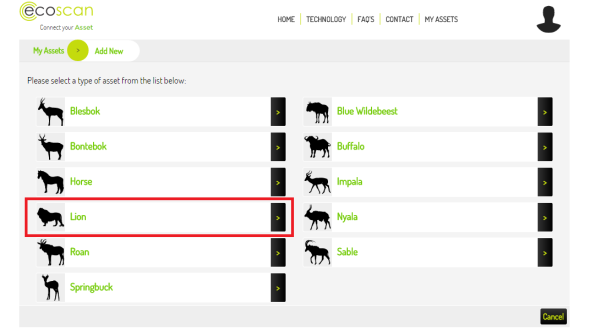 ECOSCAN is a system that Ukutula Lion and Research Center uses to sell animals on to buyers. Ukutula Lodge has also implemented into their terms and conditions one of the following rather interesting rules:
ECOSCAN is a system that Ukutula Lion and Research Center uses to sell animals on to buyers. Ukutula Lodge has also implemented into their terms and conditions one of the following rather interesting rules:
- Buyers must agree to the animal being chipped that both ECOscan and Ukutula Lodge monitor.
However what Ukutula Lion and Research Center do not tell you is that the buyer once they breed that Lion, them cubs are immune from this system. So after birth has taken place Ukutula Lodge has then distanced themselves from the questionable buyer. Meaning its “more than likely that hunting is occurring”. Lastly on checking with South African lawyers no buyer of any Lion from Ukutula does not under any circumstances have to agree with Ukutula’s terms of policies/agreements Etc. A very crafty move by an alleged Lion Research Center, one of which the public cannot easily trace that buyer too. Please view image below and click on the image to view which British Travel Agency supports it, alternatively please click >here<
Image: Volunteer Travel I-I UK supports Ukutula Lodge that Blood Lions called into question.
Last month the South African Non Governmental Organisation, Blood Lions called into question Ukutula Lodge that refused to allow the Blood Lions team onto their property to investigate claims in relation to canned hunting. To read more on that subject please view the link below:
http://www.bloodlions.org/us-volunteer-speaks-out-cubs-hired-for-parties-and-events-ukutula/
The last thing we ever wanted to be forced to do was to begin exposing the petting industry at an angle that sees us exposing those that directly contribute to the industry that has skyrocketed over the past ten years. Unfortunately we’re being forced too. We’ve provided more than enough facts, accounts, and evidence. What or more to the point how much more evidence do students, tourists and volunteers really require?
Image: Students at the Living with Big Cats Project.
Image: Student at the Living with Lions Project.
Image: Student at the Living with Lions Project.
Image: Student advertised on the UK Travel Firm Amanzi Travel UK.
Image: Lonely cub advertised for petting at the I to I Volunteering UK agency.
No money the public spends to pet or take photos with cubs ever goes to support conservation in the wild. In fact, the opposite is true. There is a huge and growing market for Tiger and Lion parts, and Tiger and Lion “derivatives”, i.e. products made out of Tiger and Lion parts like Tiger and Lion bone wine. A dead Tiger/Lion is worth up to $50,000 for its parts. Breeding what US Fish and Wildlife Service calls “generic” Tigers like the ones used in the mall exhibits is not tracked, similar to ECOscan system used by various lodges and parks in South Africa. So there is no way to know how many born Tigers/Lions are killed to have their parts illegally sold into this trade. And, the more that trade expands, the more incentive the poachers, hunters and farmers have to kill Tigers and other big cats in the wild and via hunting within South Africa. Yes sadly, farmers and lodges, parks and alleged “living with big cats programs’ will sell after hunting (in some if not all cases) bones on to the Asiatic market to double their money. All supported by you the volunteer, tourist and student.
RECAP:
The cubs used for petting exhibits/farms Etc are torn from their mothers shortly after birth, causing emotional pain to both the cubs and the mothers. Imagine what that mother experiences after enduring the long pregnancy and finally giving birth, filled with the instincts to nurture her cubs, and then having them snatched away. The breeders take them away and have people handle them so the cubs will “imprint” on the people instead of doing what is natural and imprinting on their mothers.
And what is life like during the months they are used to make money for their owners? Cubs this age want to roam, explore, test their young muscles to develop coordination, and sleep for extended periods of time without interruption. Watch what happens during these exhibits. The cubs are repeatedly awakened so a customer can pet them instead of being allowed the sleep their young bodies need. When they try to wander they are repeatedly yanked back. And where are they when not on exhibit? Well I’m sure you can answer that question. A nursery maybe? Possibly, without the mother that is pining for her young? Just because its a cozy looking nursery means nothing.
Thank you for reading.
Dr Jose C. Depre.
Chief Environmental Officer and CEO;
PhD. MEnvSc. BSc(Hons) Botany, PhD(NeuroSci) D.V.M. Environmental & Human Science
Environmental and Animal Rescue Investigations Chief Officer.
Bok Nal: Dog Eating Days - South Korea.
July - August Malbok Festival
South Korea which is located in the southern half of the Korean Peninsular of east Asia will this July to early August host its annual dog meat-eating festival commonly known as “Bok Day”, “Bok Days” or the Malbok Festival. The festival normally begins on the 13th July or 21st July, and runs into early August which is considered the hottest days of the year within the country.
General description:
The event is hosted on the first “Cho Bok” first summer continuing through to “Joong Bok”, mid-summer, on the 28th, and “Mal Bok”, end of summer, on August 7th, lasting 21 days. It’s during this event that South Korean dog and cat meat markets will begin a mass slaughter of dogs and cats. One particularly commonly killed dog is the “Noo-rung-yee” or commonly known as the “Nureongi” a yellowish traditional dog breed that has been bred to specifications over time within East Asia. There are various terms used for this festival which I’ve included within the entire article for your information and research.
To date, and like the Yulin festival there remains no factual estimates from governmental research or observation counts to place an exact number to how many dogs or cats are killed during the twenty-one day event. Some critics have placed the number of “dogs” killed during the entire “Bok Day - dog meat-eating days” at some one million dogs killed during this cruel and barbaric festival. Meanwhile other organisations and critics have placed the number at a much reduced count at some 15,000 during the Malbok Festival.
Sambok (삼복), also known as Boknal (복날), or the dog days of summer, covers a month of time at the peak of the growing season and traditional time that to some South Koreans is classified as a traditional time to cool off and extract some medicinal healing powers from the consumption of dog meat. In reality there still remains no proof or medical evidence that supports the East Asian pet meat consuming beliefs that such meats increase human health.
Image: No mercy for cats either at the Malbok Festival.
The most commonly consumed dish during the South Korean Malbok festival is that of peppery dog meat soup (quite a commonly consumed dish that we have noted within western Africa and central Africa). During the festival dogs will be seen roasted and served on a spit, and prepared in stews too. However as explained the most commonly sought after dish is that of peppery dog meat soup known as (bosintang or gaejang-guk) a dish that is steeped in history dating back thousands of years, and is now commonly consumed throughout western, central and northern Africa.
International Animal Rescue Foundation Africa has uncovered in the years of intensive bush and pet meat trade research Asian construction workers bringing the dish and recipes into the African continent. The environmental companies most shocking report that has yet to be released will finally prove that south Africa has more than its fair share of dog meat traders with illegal “404” joints too.
Bosintang aka gaejang-guk:
Bosintang or “dog meat cuisine” as the dish is commonly known remains part of the traditional south Korean dish. Research on the north Korean pet meat trade also indicates bosintang to be a commonly consumed soup eaten throughout the year. furthermore within the “404 restaurants of Lagos, Abuja and Jos in Nigeria the exact same dish is consumed by locals commonly with very potent gin”.
In reports last month and last year I.A.R.F.A and Say No To Dog Meat have unearthed very concerning data regarding dog meat and gin trade of which has seen countless scores of people dropping dead like flies. International Animal Rescue Foundation Africa and Say No To Dog Meat also uncovered hard and firm evidence that migrant workers from south Korea, China and Viet Nam had introduced the dish of gaejang-guk into the plateau states.
The main primary ingredient of Bosintang or - Gaejangguk (개장국, -醬-) - as its more commonly known in south Korea is dog meat. Dog meat is boiled with a range of aromatic and fresh vegetables with herbs such as chamomile and dandelion added to the dish. (Its believed by some tourists and locals the inclusion of these scented herbs is to remove the strong pungent, and at times nauseating aroma of stewed dog. Doenjang (된장), Gochujang (고추장), and perilla seed powder are also known to be included within this rather unsavory dish.
Bosintang has quite an extensive history within south Korean traditional food. Dating as far back to the 4th century ((AD) After the Death of Christ). We know this because of evidence that was located on the wall painting in the Goguryeo tombs complex in South Hwanghae Province, a UNESCO World Heritage site which dates from 4th century AD, depicts a slaughtered dog in a storehouse (Ahn, 2000). (Please refer to the UNESCO World Heritage site for further information).
The Balhae people also enjoyed dog meat, and the Koreans’ appetite for canine cuisine seems to have come from that era. So in all fairness it’s quite possible the Malbok festival or a similar festival will also be hosted within north Korea too. If this is true then the vast number of dogs killed and consumed for meat will heavily exceed all kill and consume estimates from organisations and animal rights individuals. Unfortunately as we’re unable to freely travel into north Korea to document on this case we’ll never know the full truth. Please do stay tuned though.
During the first day of the Malbok festival (BOK - the first day that consumers are encouraged to dine on the traditional soup or stews), other types of dishes will be on the menu - something that the Australian organisation (Say No To Dog Meat.Net) are currently demanding to be removed off the menu within south Korea.
Image: “Nureongi” a traditional dog breed commonly killed for meat within Asia.
These dishes include:
- Bosintang (보신탕; 補身湯); Gaejangguk (개장국)) – Stew containing boiled dog meat and vegetables.
- Gaegogi Jeongol (개고기 전골) – An elaborate dog stew made in a large Jeongol pan.
- Gae Suyuk (개 수육; 개水肉)- Boiled dog meat
- Gaegogi Muchim (개고기 무침) – Steamed dog meat, Korean leeks (부추), and vegetables mixed with spices
- Gaesoju (개소주; 개燒酒) – Mixed drink containing dog meat and other Chinese medicine ingredients such as ginger, chestnut, and jujube to invigorate one’s health.
While all dishes are considered grotesque, probably the most vile and repulsive of them all is that of the Gaesoju (개소주; 개燒酒). When I say vile I truly mean “vile and utterly bloody disgusting”. There remains some mystery as to what is included within this trinket of liquid dog meat although the very basic ingredients are known. Research from universities in Maine and California have located liquefied dog meat being the primary ingredient, intestines (not normally used in this liqueur type drink), traces of dog hair, teeth, herbs, spices, blood, beef and an entire textbook of virus’s, diseases and, toxins that would normally harm the non-pet-meat consumer.
Both Maine and California scientists confirmed that no medicinal properties were located in either samples or synthetic medications that could give the illusion such a tonic increases libido, lowers blood pressure, wards of evil spirits, prevents miscarriages and, acts as a bodily coolant. However as the tonic, stew and soup are consumed with “liquid” the liquid itself I.e common water helps by decreasing dehydration which in turn helps to cool the body down.
Has the common old aged belief which states “soup” can help decrease dehydration, and helps to reduce cold like symptoms been taken a little to far within in traditional Asian food and medicine culture? It’s possible and what’s more as soup contains liquid I.e water it does indeed help cool the body and relieve some cold like symptoms which is a proven scientific fact.
Cuisine Row and Moran Market:
Cuisine Row - commonly referred to by international tourists as the “Postcard Row” is located behind the local Seoul City Hall which is an area where many dog meat restaurants trade during the Malbok festival. It’s wrong for anyone to state that the festival is confined just to Moran Meat Market as the festival is a common country event gathering that thousands of people attend during the first Cho Bok (first summer) of the Malbok festival.
Back in 2014 one of Seoul’s most “infamous” yet liked restaurants within the “Cuisine Row” closed its doors to trade. Daegyo, an acclaimed Seoul restaurant that had been serving dog meat since 1981, doled out its last serving of boshintang, or dog stew in the first week of September 2014. Daegyo’s owner stated she used to serve over “700 bowls of dog meat stew a day”. Should that figure be correct, and taking into account the entire number of markets and restaurants followed up by the Malbok festival its quite likely the number of dogs (excluding cats) killed within south Korea alone could hit one to two million every month. However and as frustrating as it is statistics on the number of dogs and cats killed within the month-long Malbok festival is still sketchy to say the least.
However lets not all think negative and become emotional. Daegyo’s closed for a reason which in the owners own words “There are no young customers,” she said. To cater to the changing times, Keum-il plans to reopen the restaurant as a Korean beef barbecue diner.
Image: Laws prohibit companion dogs viewing friends killed for the plate in south Korea.
Cuisine Row is quite a sprawling shopping district situated behind City Hall that hosts many restaurants with live and dead meat markets. The most commonly seen shops and stalls are dog and cat meat vendors, however since our last visit to the country many of these restaurants and markets have shut up shop and, like Keum-il has confirmed - reopened as a non-dog or cat meat trading company.
Seongnam Moran Market:
Seongnam Moran Market is often called “Moran Meat Market” due to its unhealthy sales of dogs, cats, chickens, goats and just about any other animal you could possibly think of. However it must be noted Moran Market doesn’t just sell meat or live animals. Vegetables, clothing and more or less the same products you purchase at home in your country are also on sale within the countries largest bustling market hence its true name “Seongnam Moran Market” and not “Moran Meat Market”. The market is located within Seoul and has been notoriously described as hell on Earth by activists and tourists.
Seongnam Moran Market is located within the Gyeinggi-do-province which is south Korea’s largest “five-day” open market. The market is known by the locals as a farmers market which is where we now bring the horrors of Bok Nal to you. Strangely the days ending in “4 and 9” is when you’ll witness more street vendors within the markets bargaining and selling anything from dogs, cats, haberdashery to clothing too.
Image: Moran Market is known to be the largest supplier of dogs in the country.
As you venture into the center of the market the stench truly is gut churning. Dogs and cats can be witnessed in small cramped cages most of them still wearing identification collars. Many of the dogs and cats suffer from a wide range of illnesses, parasites and diseases “unfit for human consumption” of which are still beaten, killed then sold to the unsuspecting locals.
On visiting the market few years back I counted on average around twenty-three stalls that sold “just dog and cat meat” or live dogs and cats. Many of the stalls host their own unhygienic butchery of which there is no refrigeration, chilling cabinets or freezers to slow down food decomposition. One of my major concerns was fact that both “live animals, raw and cooked meats were laying next to one another. Within the western world this would be considered a food hygiene nightmare forcing the local food inspectors to close such entities down immediately. Selling diseased animals next to raw, cooked and under-cooked meat is tantamount to murder or common assault.
Purchasing any animal, raw or under-cooked meat is not only dicing with death but also spreads diseases and virus onto other people which is probably why we now have quite an extensive increase of Avian Flu and now MERS outbreaks within dog meat-eating zones and states of America and Europe where dogs have been rescued and flown out of South Korea. Dogs but not cats can host Avian Flu. To date there is no proof that rescued dogs from south Korea brought back into the states of America have spread Avian Influenza.
Moran Market is known as the largest supplier of dog and cat meat within South Korea. When the Bok Nal festival kicks off there is within the region an estimated (100,000) dogs and cats killed within the first few days alone. However please remember this is based on estimated figures that do not present any proof that such number is factual.
A member of the public whom was investigating the market stated “cages and cages stuffed with chickens, roosters, black goats (extracts and soups), bunnies, kittens (medicinal extracts, stews, and soups) and the crush of so-called “meat” or yellow dogs (Nureongi), ubiquitous, crammed together, in obscenely filthy cages”. Sadly this is common within Moran Market and something that the Australian organisation “Say No To Dog Meat” are taking seriously.
The law:
Despite laws that have been drafted into place to halt such abuse, dog and cat meat traders will this July into early August beat, blowtorch, hang and inhumanely kill countless dogs and cats. Back in 2007 the south Korean government made history by making “An act of killing in a cruel way such as hanging” and “an act of killing in an open area such as on the street or in front of other animals of the same kind watching” are explicitly prohibited until Article 7 (1) of the Animal Protection Act of 2007. Unfortunately the laws apply to abuse rather than prohibiting the trade full stop.
However sadly, dogs and cats are brutally beaten in front of their companion friends (a violation of APA 2007), electrocuted (a violation of the APA 2007), hung from rafters in the markets alive (a violation of the APA 2007) and, furthermore street vendors continue to kill in open spaces as well within the center of the market (a violation of the APA 2007 Act) - excluding the center market place).
Updates to the policy from 2008 can be briefly read below. The policy is believed to have been brought into practice back in 1991
Animals under protection should be free from the following (Article 3 Animal Protection);
- Hunger and thirst.
- Able to express natural behavior.
- Free from pain and disease.
- Free from fear and stress.
- Animal Welfare Act Plan should be updated every 5 years and local governments shall cooperate with the central government.
The Animal Welfare Act Plan includes the following:
- Basic policies on animal welfare and prevention of animal abuse.
- Management of lost and abandoned animals.
- Policy on Animal Experiment Ethics Committee.
- Policy on farm animal welfare.
Image: Puppies are sold for slaughter within Moran Market - A violation of the APA.
Interestingly and despite just about every rule in the book being violated come this July’s Bok Nal festival under Article (19 Animal Protection Warden) the government or any organisation must provide an experienced and duel qualified warden to walk the market places and “non-Moran Market” zones to ensure that the Animal Protection Act 2007 is being enforced.
The following legislature states:
The Minister of Food, Agriculture, Foresting and Fisheries, Mayor or Governor and Mayor or County Magistrate must appoint an animal protection warden in order to manage the work related to animal protection. The Minister of Food, Agriculture, Foresting and Fisheries, Mayor or Governor and Mayor or County Magistrate can appoint a person recommended by a private organization approved by presidential decree, or a person who is well learned and experienced in animal protection, as the animal protection warden for the monitoring of animal abuse and rescue and protection of abused animals.
The Animal Protection Act was allegedly brought into practice back in 1991 however is more aimed at the “slaughtering of animals” rather than the upkeep, care and abuse in general. Say No To Dog Meat.Net are lobbying the south Korean government to amend the current legislation to include more rights and welfare for animals. Say No To Dog Meat.Nets petition can be seen below that holds over 150,000 signatures. Please click on the image link and help the organisation by placing your signature to the petition that will eventually be handed direct to the south Korean president and Mayor of Seoul.
Image: Click the image above and help Say No To Dog Meat.Net end this torturous trade.
Statistics:
As explained in many past and present articles there remains no “factual” governmental statistics that can prove how many dogs and cats are killed “year round” within south Korea and, no real data to prove how many dogs and cats have been killed during the Bok Nal festival past and present. Without these statistics organisations such as Say No To Dog Meat must then rely on visual reports from the ground, interviews with traders and restaurant owners.
It would be deemed as grossly unprofessional for any organisation or individual to place any number into the domain without proof then ask for public donations. Instead bringing the trade and abuse into the limelight is considered more of a realist approach in the hope it will eventually bring the government to its feet to ban the trade or implement tough legislation to prosecute traders whom violate the laws already set out. Below are (estimates) and must not be taken as a proven or accurate statement.
The following data below derives from actual traders on the ground that have been interviewed during and after the Bok Nal festival. Included beneath is the average price of dogs and price for slaughter.
Estimated statistics on consumption and ownership:
- Trader 1 - Dog and cat meat restaurants number around 500-600 in Seoul alone.
- Trader 2 - During the last summer festival “estimates” of some 5 to 6 million dog meat dishes were sold during the twenty-one day event.
- Trader 3 - According to the Korean Kennel Foundation it’s believed that some 3.5 to 5.0 million dogs are kept as companion pets nationwide.
Estimated south Korean dog price and slaughter info:
- Gyeongdong Market in central Seoul - trader 1 states that the average price of slaughter/preparation/cooking and bagging is around 150,000 won.
- The current starting price for one dog comes in at 120,000 won and can exceed 190,000 won to 200,000 won stated trader 2.
- Separate pieces of dog meat are usually sold by weight, 5,000 won per geun (1.3 pounds/0.6 kilograms) explained trader 3.
- Another commonly served dish is sliced dog meat. A whole dog usually costs around 300,000 won in restaurants trader 4 stated.
- Gyeongseong Oriental Medicine Clinic, located near the market ask 350,000 won for a month’s worth of gaesoju; they charge half that if the customer provides the dog. Customers have to pay 20,000 won extra for slaughtering.
Image: Gyeongdong Market in central Seoul.
Changing Times:
While the trade in dog and cat meat continues times are in fact changing despite some organisations stating the trade is out of control to the point it cannot be controlled. Say No To Dog Meat, In Defense of Animals, Humane Society, Soi Dog and countless other organisations are all working towards providing dog meat traders with a more sustainable and healthier trade. Say No To Dog Meat’s mission for example is not just about “banning the trade”. One must remember this is indeed a trade and taking away people’s livelihoods despite the fact the western world sees such trades as cruel - will only increase unemployment, poverty and crime.
The board of directors have since founded, already devised a strong and trusted plan supported by over fifty thousand people and counting. Your donation can make a difference by providing traders and farmers with land and equipment to create a more attractive, non-abusive and a prosperous future ahead instead of using any donation to purchase dogs or cats from traders which only increases the circle of abuse.
Image: Cebu, Philippines young activists aligned with the Say No To Dog Meat.Net organisation make their voice heard this past April 4th 2015 for S.N.T.D.M’s mass global anti pet meat trade demonstrations. The event hit Asia by storm supported by countless organisations and animal loving individuals. Say No To Dog Meat.Net rolled its youth education program out last year and has already seen a massive response from the young Asian community. Cebu children sent a message via Say No To Dog Meat to the pet meat-eating community - Please click the link above to view that message on Facebook. To join the Youth Club please contact: [email protected] today.
Creating fruit farms, vegetable farms, cotton farms, is one of many options already implemented by some organisations and the organisation Say No To Dog Meat. Establishment of pet rescue clinics has already been on the Say No To Dog Meat agenda of which removes dogs and cats from the streets, treating and, re-homing to trusted and caring families locally and internationally.
Many young people from all over Asia have already joined the Say No To Dog Meat mission and to date are lobbying with the organisation to bring this trade to an end while creating education and awareness to the many younger generations. Spreading the word among the young is pivotal and, has already proven to be a positive step for the Say No To Dog Meat organisation and mission objectives.
Say No To Dog Meat.Net:
Say No To Dog Meat.Net was established back in 2012 and founded in 2013. The organisation’s team are tackling traders within south Korea; Viet Nam; Cambodia; Thailand; Philippines; Nigeria; Ghana; Liberia and, Niger. Since founded Michele Brown, myself (Jose Depre), Donna Armes and our sister organisation have begun intensive lobbying of south Korean ministers, south Korean President, and the mayor of Seoul.
Say No To Dog Meat which is not related to the British charity (No To Dog Meat) also hosts petitions for each country they are actively working to end the trade within. South Korea being the most prominent of which the Aussie organisations petition holds over 150,159 signatures. The organisation requires at least a million signatures that will form part of the #Operationunite project bringing activists together to end this barbaric trade once and for all while offering dog and meat traders a way out of their traditional trade and, into a trade that is more profitable and all-round healthy.
Image: Stray dog looks on in sadness as friends are killed in front if him.
You can help Say No To Dog Meat.Net below:
- Sign the petition calling on the South Korean Government to take dog and cat meat of the menu.
- Get involved this September that will see many individuals lobbying for change this Embassy Day. South Korean embassy will be one of many embassies that the organisation will be pursuing for change.
- Encourage the younger generation to become involved. Say No To Dog Meat are currently seeking all young animal lovers to draw or paint their thoughts and, send in a small written message addressed to the South Korean government with an image of their hand with the words “I Say No To Dog Meat” on. (Watch the page for new updates)
- Host an awareness and education day this July in your city or begin planning for an adult/youth awareness and education day for Say No To Dog Meat’s #OperationUnite 2016 events.
- Donate. Say No To Dog Meat.Net cannot tackle the dog meat traders or farmers without your donation. (Please note: Say No To Dog Meat.Net “does not accept donations via cell phone devices”. All donations can be made via direct online transactions “safe and secure” or you can donate to the Say No To Dog Meat’s Environmental Companies F.A.A.W.S bank account on Pay Pal. Simply input this address - [email protected] and add the amount. You’ll receive like the SNTDM organisation will an electronic receipt, and you’ll be entered into the organisations free news letter subscription service.
For further information please contact the organisation hereto: [email protected]
Thank you for reading.
Dr Jose C. Depre
Chief Environmental Officer and CEO.
Africa: Culture, Abuse & Crime. Hyena Boys.
Abuse or Culture?
Its been a long time since I last documented on the hyena men within Nigeria. My last article was more focusing on why men feel the need to take any animal from its natural habitat, drugging the animals into submission thus in a way domesticating them. Peter Hugo was one of the very first men to document and illustrate on this rather strange and morbid behavior of both man and animals.
This Wednesdays article focuses more on whether such domestication of wild hyenas (or any animals from the wild) is considered abusive or culture and, will such a “fashion trend” spread into neighboring countries on the continent of Africa? Yes, you did just read that correctly - hyenas are seen by some people (mainly men) within Nigeria as a fashion statement over dogs. Yet the hyena is more closely related to cats and not dogs.
Brief hyena history:
Hyenas or hyaenas (from Greek ὕαινα hýaina) are the animals of the family Hyaenidae /haɪˈɛnɨdiː/ of the feliform suborder of the Carnivora. With only four extant species, it is the fifth-smallest biological family in the Carnivora, and one of the smallest in the class Mammalia. Despite their low diversity, hyenas are unique and vital components of most African ecosystems.
Within Western African tradition hyenas have been known to mingle and interact with humans. The spotted hyena was considered a “bad Muslim” who challenge the local animism that exists among the Beng in Côte d’Ivoire. In East Africa, Tabwa mythology portrays the spotted hyena as a solar animal that first brought the sun to warm the cold earth, while West African folklore generally shows the hyena as symbolizing immorality, dirty habits, the reversal of normal activities, and other negative traits. In Tanzania, there is a belief that witches use spotted hyenas as mounts.
In the Mtwara Region of Tanzania, it is believed that a child born at night while a hyena is crying will likely grow up to be a thief. In the same area, hyena faeces are believed to enable a child to walk at an early age, thus it is not uncommon in that area to see children with hyena dung wrapped in their clothes.
Image: Hyena and cub.
The Kaguru of Tanzania and the Kujamaat of Southern Senegal view hyenas as inedible and greedy hermaphrodites. A mythical African tribe called the Bouda is reputed to house members able to transform into hyenas. A similar myth occurs in Mansoa. These “werehyenas” are executed when discovered, but do not revert to their human form when killed. In all hyena’s are pretty much disliked among many traditional communities and are thought to bring a whole host of bad spirits and bad luck.
The hyena men and hyena man:
There are two groups of hyena men known. The first resides in Nigeria known as travelling performers while in Ethiopia there remains a “hyena man” rather than “men” named as Yusef. The Nigerian hyena men were first photographed by Peter Hugo. Nigerian hyena men are known to capture hyena’s, baboons and pythons of which are then tamed aggressively which we believe the use of powerful narcotics or veterinary tranquilizers are used to heavily subdue or sedate the animals removing their primal hunting instincts and natural behavior thus converting to human slavery.
Noted as travelling performers the hyena men are said to care for their animals while travelling the country followed by many whom shower the men with Naira (Nigerian currency). From observing reports it seems that the hyena men are really no different to the Monks of Tiger Temple in Indonesia. Drug and herbal concoctions are administered to subdue the animals before being captured and when on display to ensure the men are not injured or even killed by these aggressive carnivores. Peter Hugo also described how the men bathe in an unknown medical concoction of herbs as well as drinking medicinal concoctions in the belief that this will protect the men from harm when hunting and capturing the animals for later human domestication.
On hunting the hyena down with dogs the men are then said to blow a white tranquilizing powder into the face of the hyena in the hope to subdue it once the beast has been coaxed out its den. Once the hyena is subdued the men are then said to cage the animal before bringing the animal back to the local village community. Mr Hugo described that when the hyena’s are captured the hyena men then rub a unknown medicine onto the body of the hyena that is said to make the animal completely obedient.
Environmental News and Media are not quite sure as to what the medicine is or even if any such “medical rub” is administered that has any form of active properties to help subdue the animals. Its quite possible the “white powder” that is blown into the face of the animal could be “Diazepam” which would explain why the animal is then quickly subdued and for long periods of time. We don’t believe that any such skin rub that is administered to the animal would then make the animal[s] completely obedient. For such a large predatory animal to be subdued completely one would require a significantly large dose of analgesia, opiates or a stronger barbiturate to fully contain and subdue the animal. That would then be considered as abuse and something which is a violation under the Nigerian Animal Welfare Law.
Image: Hyena boys with muzzled Hyena.
Once the hyena is under the complete control of its handlers the handler will then teach the animal performing tricks and, how to live with its captive abductors (see video below). We do find this again quite baffling to take on board as hyena’s are natural born killers, very predatory and, on viewing the imagery taken by Peter Hugo it clearly shows multiple hyenas heavily chained and muzzled. So in all fairness while some people have been led to believe this is all OK its quite possible that these stunning animals are being fed a heavy dose of tranquilizers and/or depressive human or animal related relaxation medications.
Due to Nigeria’s rampant poverty the handlers were/are “allegedly forced” to parade their captive animals through the local community streets of which any raised money is said to be used to fend and care for the animals well being. In reality any money that is raised or stolen is used to feed their alleged narcotic habit and crime.
Baboons will perform a variety of tricks of which money is handed over to either animal or animals handler. Unfortunately the main earners are hyenas. Another concern raised was that many abducted animals are sold onto zoological gardens within the country that’s seen as another money maker. Peter Hugo quoted “The hyena men of Nigeria do more than simply put on a street show but they provide medicine to the public and more importantly stimulate the economy of whatever area they are in as well as act as a cultural product from the area”.
Meanwhile on the outskirts of Harar, Ethiopia another hyena man is said to exist known as Yusef. Yusef does not make money from animal performances but more admires their attention - despite these animals belonging to the wild and can at times be very unpredictable. Every night Yusef will feed the visiting hyenas with mule and camel meat. In a way these species of hyena seem to tolerate Yusef and also enjoy his company of which Yusef treats them like domesticated dogs. Many people in Harar are said to actually worship the hyena and treat them with the utmost respect which could explain why they’re not kept as performing animals but left to live how they should within their natural habitat.
Crime and exploitation:
Moving back to the Nigerian hyena men local press and media that picked the story up few years back were quoted as stating “that these men were bank robbers, bodyguards, drug dealers and debt collectors”. Between March 7th and 15th 2015 a local man named as Mr Mohammed Nafiu aged 27 who has been “suspected” of being part of the hyena men group was arrested and charged after using baboons and pythons to rob people within the country.
He pleaded not guilty to the charges. However, the prosecutor, ASP Eranus Nnamonu insisted that the accused committed the offences on March 7 and 17 when he terrorised the residents of Ogba and Ijaiye in Lagos.
He said Mr. Nafiu, armed with a fully grown baboon and a venomous snake, also terrified a crowd waiting to board a bus at Ogba Bus Stop. Mr. Nnamonu said the accused isolated a witness, Joshua Odogwu, and thereafter obtained N57, 000 from him.
“The obviously terrified victim dropped all he had in his bag along with N57, 000 cash, which the accused collected,” he said. In addition, he said the accused had on March 17 visited the shop of a man, Henry Ugwuokoh, and forcefully obtained N230, 000. The offences, Mr. Nnamonu noted, contravened Sections 166, 294, 295 and 409 of the Criminal Law of Lagos State, 2011. In her ruling, the Magistrate, Abimbola Komolafe, granted the accused bail in the sum of N100, 000 with two sureties in like sum and adjourned the case to June 18 2015 for trial to be held tomorrow.
Recently back in 2014 a local documentary-maker Tarryn Crossman won the award for Best Documentary Short for Hyena Boys at the California International Shorts Festival. Despite much criticism and debate from Carte Blanche, 50/50 and environmental and animal welfare groups the “award winning short film” was aired. Since Peter Hugo’s capture on the hyena men now known as the hyena boys, countless film, documentary producers and organisations have visited the group of men headed by Baba Mohammed that is in our eyes creating the wrong image and sending the wrong message to many people that abducting a wild animal to generate money from street performances is OK?
As explained its not just hyena’s that are taken from the wild and held in solitary confinement. Baboons, reptiles, snakes and small monkeys are also removed illegally from the wild. Furthermore the animals are also sold on to individuals within the communities as “pets” or as seen in the image below killed for meat to feed the locals.
Image: Hyena meat carcass and Hyena boy with muzzled hyena.
Yahaya one of the Nigerian, Lagos “hyena men” was quoted as saying “Any animal that people want, we can get for them,’ said Yahaya, who claims that they have supplied hyenas, pythons and other animals to zoos in Nigeria, Cameroon, Burkina Faso and Benin. ‘A mature hyena is sold for one hundred and fifty thousand naira, but a cub is more expensive at two hundred and fifty thousand naira. This is because a cub can be trained. An adult baboon goes for fifteen thousand naira, a young one for eight thousand. A python goes for eight to ten, depending on the size.’”
What has turned in to a street performing activity to make money to “allegedly” feed the impoverished has clearly been heavily exploited too. Capturing these stunning animals from the wild to perform or to sell on as meat or pets is wrong and any film production team that honestly believes this is totally OK are foolish and supportive of animal captivity, abuse and, exploitation.
The entertainers have also been accused by the Nigerian police of using the animals to threaten or intimidate members of the public into parting with money or possessions. In June 2004 a report in Lagos newspaper This Day claimed that an armed ‘gang who used a hyena and a monkey to rob their victims’ had a shootout with police. The report can be read below:
June 2004: Four armed man suspected to be from the group “hyena boys” held up a bank with baboons and hyenas.
Four armed gang who used a hyena and a monkey to rob their victims in Katsina State have been arrested by the police after a gun duel in Bichi, headquarters of Bichi Local Government of Kano State. According to a statement made available to newsmen in Katsina, the robbers who were seven in number went to Kankia market in Kankia Local Government of Katsina State to display with the animals while they robbed their victims of N66,000 during their operation.
Shortly after their operation, the statement added, the robbers took to their heels and they were chased by the police down to Bichi in Kano State where they engaged the police in a gun battle which led to the death of two of the robbers. During the battle with the police, the gang let off the hyena and monkey to fight with the police during which the animals bit one of the policemen who is now lying critically ill at the Katsina General Hospital.
Two of the robbers were killed while four of them arrested on the spot. The police had however killed the two animals during the fight in Bichi. Meanwhile, two robbers have been arrested by the police in Funtua for allegedly burgling the home of the former Minister for Special Duties during the Abacha administration in the country Alhaji Wada Nas.
The hyena boys are known to deal heavily in narcotics which the film crew producer Tarryn Crossman confirmed on visiting the hyena boys back in 2014. Tarryn Crossman stated that on entering the camp they walked into a large camp populated with many people and cannabis laying everywhere. Tarryn Crossman’s own words “We thought we were going to die”.
Captive cruelty and abuse:
For years International Animal Rescue Foundation Africa has documented on animal abuse and captive cruelty however, nothing can be more cruel and abusive than this. Abducting wild animals from their natural habitat with vicious dogs, using hypnotic medications to subdue the animals and beating the animals should they not do what their masters demand. It really baffles us as to why any such film or press agency would even document on such so called traditions knowing their abuse that goes on within camp and outside of camp.
Wild animals in captivity are often anxious about being cooped up. And the stressors of social animals can sound strikingly similar to the popularity concerns of high school girls. Mark Wilson, a neuroscientist at Yerkes National Primate Research Center of Georgia’s Emory University, studies captive female rhesus macaque monkeys, housed in groups as they would live in the wild. The monkeys naturally form a hierarchy with some females dominating others, and subordinates enduring harassment and a general lack of control.
Furthermore and even more worrying is the sheer fact the hyena boys have not tamed wild caught adult hyenas at all. The only thing stopping these dangerous carnivores from ripping their owners to shreds are illicit “unknown” medications that help to subdue the animal and take its inhibitions away therefore doing everything the owner or owners bark at the hyena or other animals. I
have included two images for you to clearly evaluate from research. One depicts an non-muzzled adult hyena and a Tiger from the repulsive Tiger Temple. Both hyenas and tigers are dangerous animals of which their natural instincts are to hunt and be predatory. I have searched in vain for as many images as possible depicting non-muzzled hyenas from the hyena boys camp however, to no avail.
Image (1) and (2) Drug induced state - Subdued Hyena and Tiger.
As one can quite clearly see both tiger and hyena are being man-handled. Neither animals would if not drugged take this abusive treatment for very long before lashing out and seriously harming the owner[s]. Which has led us to believe since Peter Hugo first documented on the hyena boys, the hyenas are clearly drugged with either cannabis that was witnessed at the camp in 2014 by film producer Terryn Crossman or heroin. Furthermore individuals from the Australian organisation known as (Cee4life) have been quoted as witnessing cannabis being fed into Tiger food and possibly Sativex, a liquid cannabis tincture.
Further research and accounts from the hyena men have generally stated that hyenas make very good pets and as they are related to dogs they’d be the ideal candidate for home security. Furthermore my research conducted last year of which I located a earlier video of the hyena men stating “hyenas are the new black mans dogs, pit bulls are for sissies”. So, lets debunk this. Firstly hyenas are nowhere near related to dogs. Hyenas are actually more related to cats. Keeping hyenas as pets is considered the “new image” within Nigeria however, do hyenas actually make good pets?
Although a few people in Africa and Asia find very young hyenas in nature and raise them as pets, these animals generally appear to be extremely unhappy as “domestic companions” as adults, and must often be kept muzzled at all times so that they do not harm people or property One only has to view the videos above that clearly illustrates their unhappiness at being chained and muzzled. A muzzle prevents the hyenas from being able to groom itself properly.
As spotted hyenas need several years of practice to become proficient hunters, and as they are deprived of this practice when reared as pets, it is effectively a death sentence for a captive-reared hyenas to be released into the wild. In addition, pet hyenas cannot be released for fear that they might transfer new pathogens from captive environments into the wild. Upon reaching adulthood, many “pet” hyenas must therefore be euthanized.
Concluding:
I have researched many so called traditions and cultures over the years involving humans and wild animals removed from their natural habitat to be used in street or circus performances or domesticated as pets. Never within my entire career have I yet to locate any real evidence that indicates large predators, monkeys or apes are suited to domestication or take to being used as performing animals. Large predators, monkeys and apes belong in the wild and not within a human controlled environment. It is therefore in my own expert opinion the Nigerian Government must act to firstly ban such cultures and remove these animals either placing them into a more suited human controlled reserve or, unfortunately euthanizing them immediately. We as humans do not have the rights to wander into any animals natural habitat to abduct and then exploit for monetary greed. We are playing with fire here and opening Pandora’s box furthermore to virus’s jumping from animal to human. 75% of all known virus actually derive from animals.
Thank you for reading.
Dr Jose C. Depre
Environmental and Botanical Scientist.
International Animal Rescue Foundation (Africa, Europe, Canada, America, Asia, South America).
Say No To Dog Meat - Demonstration, Rescue and Rehabilitation.
An organisation called Say No To Dog Meat.Net are holding an event on the 4th April 2015 at 10:00 am internationally. The event that’s been in the planning since last year is to be held in many countries from London, Australia, Canada, America, Serbia, Indonesia, South Africa and more. For more information on Say No To Dog Meat’s global demonstration please click this >here< that will direct you to their Facebook page event forum.
Say No To Dog Meat was formed by three Chief Executive Officers that work within the environmental and animal rescue sector. The organisation has to date attracted hundreds of thousands of people worldwide, readers and supporters to their cause. Say No To Dog Meat is within the transition process of becoming an Australian registered charity, furthermore have recently purchased a run down derelict building within Viet Nam of which will be their main Asian pet medical rescue and rehabilitation clinic. Once dogs and cats are safe from the clutches of pet eaters, traders and snatchers they will be re-homed internationally to loving and caring adopters.
The rescue and rehabilitation clinic is incredibly important to the three Chief Executive Officers their volunteers and staff. Say No To Dog Meat’s rescue and rehab clinic will be one of few such rescues within Viet Nam that actively help to remove strays of the streets within Viet Nam that have no home thus removing dogs and cats from the snatchers clutches whom feed into the cruel and diseased pet meat trade.
B.A.R.C. IS ALSO MARCHING WITH Say No To Dog Meat in their Global March for dogs and cats in the meat trade; 10am Saturday April 4th, 2015. Will you be marching with them too, in your country? For more information email Say No To Dog Meat here at - [email protected] for a march location in your country.
While the Organisation is being heavily supported by its sister Environmental Organisation - International Animal Rescue Foundation Africa via media, press and private funding, funds are limited. Say No To Dog Meat need public support both financially and via its supporters through sharing articles, news and helping with organizing events and educational classes worldwide to help reduce the pet trade through honest youth and adult education. Not forgetting educating the public about meat food viruses and viruses as a whole that are passed on or mutate from live or dead animals and meat kept in unsanitary conditions. Some amazing media articles have already been released about Say No To Dog Meat such as here on Dogster and even while underfunded Say No To Dog Meat have already helped shut down a small dog meat market and rescued dogs from the meat trade - Read more here
A unique organisation:
Say No To Dog Meat are unique as their main ambition is not only to end the pet meat trade within Asia and Africa but also the cruel and barbaric bushmeat trade that poses a serious disease and health risk threat to humans and animals. The term bushmeat, also called wildmeat and game meat, refers to meat from non-domesticated mammals, reptiles, amphibians and birds hunted for food in tropical forests. Commercial harvesting and the trade of wildlife is considered a threat to biodiversity and human security. Should the bushmeat trade trade continue to be ignored we’ll see catastrophic declines of wildlife in areas of Africa and Asia of which extinctions are already occurring both locally and regionally of some exotic species.
Say No To Dog Meat also appeals to all tourists visiting Viet Nam to please refrain from making their jobs harder to ban the trade. Its commercials such as this seen below that only feed the trade.
Mission Statement:
Say No To Dog Meat’s founders have decades of experience fighting this inhumane industry and have worked hard to achieve unprecedented access into areas of the trade not readily accessible to most outsiders. The organisations investigative work allows them to gather current, accurate and up-to-date information and images, evidence that is paramount in spreading global awareness and pressuring governmental organizations to enact enforceable animal welfare laws that protect companion animals. Ultimately, the organisations intention is to help create meaningful social and governmental change that results in a more humane world for dogs and cats and wildlife endangered by the bushmeat industry.
The organisation is determined to expose the cruel and ruthless activities within the dog and cat meat trade that are perpetrated by dog farmers, cat farmers, animal traffickers, butchers, vendors and dog and cat eating customers. “This is a billion dollar industry” Co-Founder Donna Armes stated, centered on live companion animals being tortured, killed and served as menu items. “It is a gruesome, violent trade that must be halted” stated Michelle Brown Director of Say No To Dog Meat and Co-Director for International Animal Rescue Foundation Africa.
Video below shows Viet Nam dog snatchers this October caught on CCTV - these dogs are most likely now dead - fed into a cruel and horrific pet meat industry, Say No To Dog Meat aims to stop this with new laws they are lobbying the Viet Nam government with on two separate petitions.
By tackling poverty in the nations of Africa where dog meat is being consumed, Say No To Dog Meat will work with aid organisations and companies, as well as welfare groups and communities. Founder Dr Jose Depre states “we are positive that by improving dietary needs and wiping out poverty in these small areas of Africa, we can wipe out the dog meat trade and black market, thus decreasing infectious diseases, rabies, H1N1, mutations and food poisoning”.
Further to this awareness and education, within the arable agricultural section, Say No To Dog Meat hope to improve the lives of families and increase employment, thus decreasing crime, however the CEO stated “this is going to be the toughest area both within the pet meat industry and black market trade we’ve ever tackled, these actions will bring a better welfare for all though and we’ll not stop marching forwards for animal welfare nor will anyone get within our way in conquering our goals set, we have a job to do and we’re going to do it”
INDONESIA IS MARCHING WITH Say No To Dog Meat in their Global March for dogs and cats in the meat trade; 10am Saturday April 4th, 2015. Will you be marching with them too? For more info email Say No To Dog Meat.Net @ [email protected] for a march location in your country. INDONESIAN SUPPORTERS: please join Animal Defenders Indonesia in the JAKARTA march.
Founders of Say No To Dog Meat aggressively opposes legislation that promotes or legalizes companion animal slaughter. They do not believe in the myth of “humane meat,” reject the concept of “humane slaughter” and strongly believe that dog and cat butchers cannot be relied upon to implement “humane” practices. The organisation founders also oppose dog farmers, cat farmers, slaughter unions, individual farmers or any persons being permitted to “farm” small numbers of dogs and/or cats for personal consumption. In addition, they are against dog and cat elixirs and tonics, despite (unproven) claims of their health benefits.
Through educational efforts, Say No To Dog Meat hopes to enlighten the global public about the miserable lives farmed companion animals face and how this trade impacts dogs and cats throughout the world. Education will also be provided for those wishing to adopt rescued animals from the live meat trade. These animals have been through varying degrees of trauma, so guidance is needed in ensuring adoptive families understand the process of restoring their new pet’s health, happiness and well-being. In addition, Say No To Dog Meat will provide education for people in dog and cat eating countries who wish to learn about responsible pet ownership and providing safe, long-term environments for dogs and cats as loved family members.
Please Donate:
Say No To Dog Meat has commenced fundraising, from which their efforts will include rehoming rescued dogs and cats from the live meat trade once the Viet Nam rescue and medical clinic has been established. “All fundraising will be conducted with full transparency and information pertaining to our monetary activities will be made readily available” stated Michelle Brown wildlife rescue specialist that resides in Australia. Donna Armes that resides now in Canada stated “participating in Say No To Dog Meat campaigns and signing our petitions supports our work furthermore to bring change for a better world for dogs and cats victimized by this trade”. “We invite you to join our fight to halt the live dog and cat meat trade and Say No To Dog Meat” stated the team of elite environmentalists and animal rescuers.
Say No To Dog Meat’s donation link is below. The link will direct you to their Facebook page from which you can also subscribe to their site for news and events plus lots more.
Please Make a donation TODAY and help Say No To Dog Meat - Thank you
The organisation now requires public funding to help establish their rescue and medical facility for dogs and cats in Viet Nam and hopefully over the borders too. Say No To Dog Meat requires funding for renovation, water, gas and electrical services to be reinstated, pet triage and surgical clinic, rehabilitation and special needs area, isolation clinic, cages and pet boxes, surgical equipment, bedding and blankets, medical supplies, food, and much more.
Once the rescue and rehabilitation clinic is fully operation specialist staff employed will then commence rescuing strays from the streets of Viet Nam of both sick dogs and cats and pets in need of a loving forever home. There’s more too. The organisation will also be holding rabies and vaccination clinics to help reduce disease and decrease rabies within the country and over the borders. Lastly while Say No To Dog Meat recognizes the honest work undertaken by groups of Asian activists that actively seek out pet meat traffickers - no animals that Say No To Dog Meat’s staff rescue will come from traffickers or butchers that require payment. “What’s the point in paying pet meat traffickers and marketeers just for them to purchase more dogs and cats from public funding” stated Jose Depre, “that is defeating the main objective and continues to feed the pet meat trade, were here to help and rescue pets not to continue a trade a circle of abuse”.
SAY NO TO DOG MEAT.NET is calling on the public to help them with their global march planned since January 2014. Demonstration event organizers and demonstrators are required eagerly to beef up numbers to make change happen. For more information you can contact Say No To Dog Meat hereto at [email protected]
Liam Williams - Publisher Environmental News and Media

